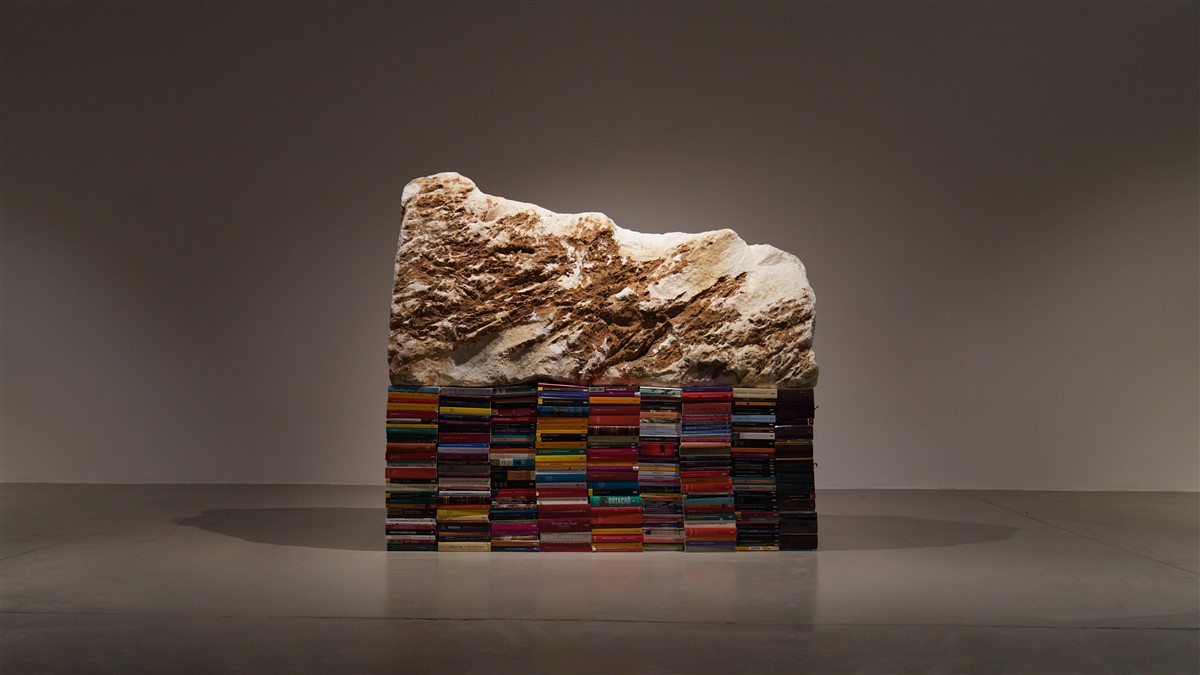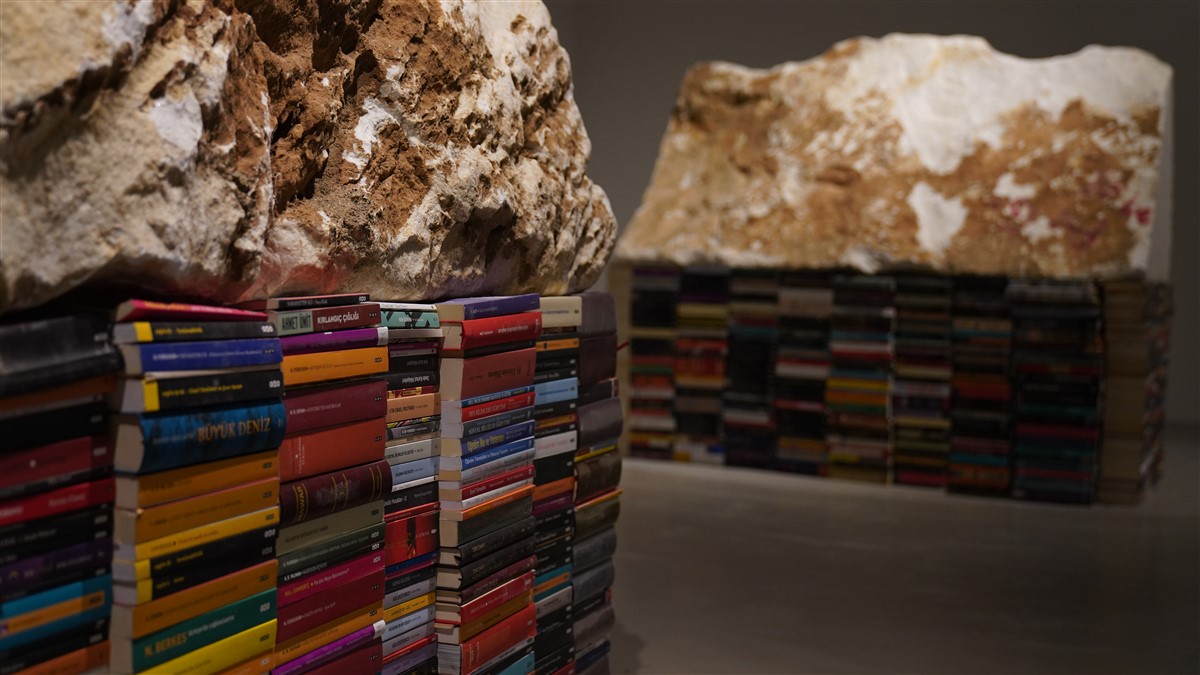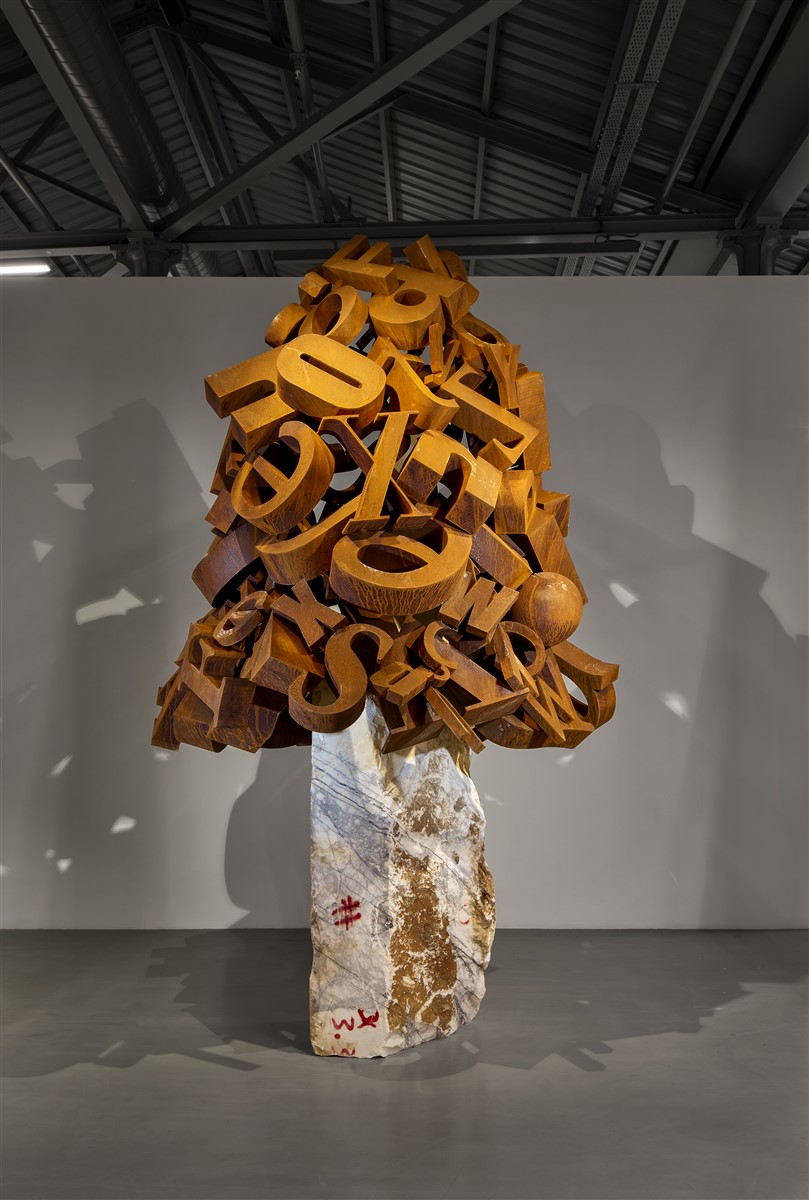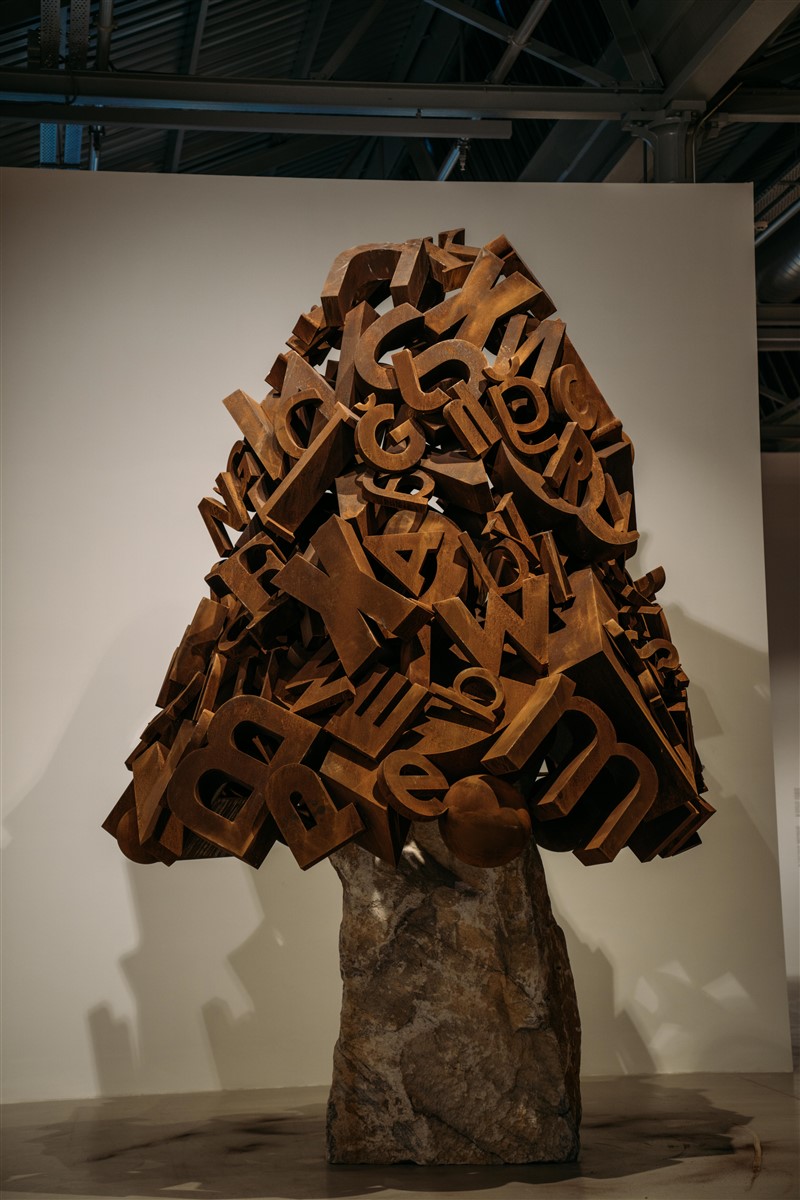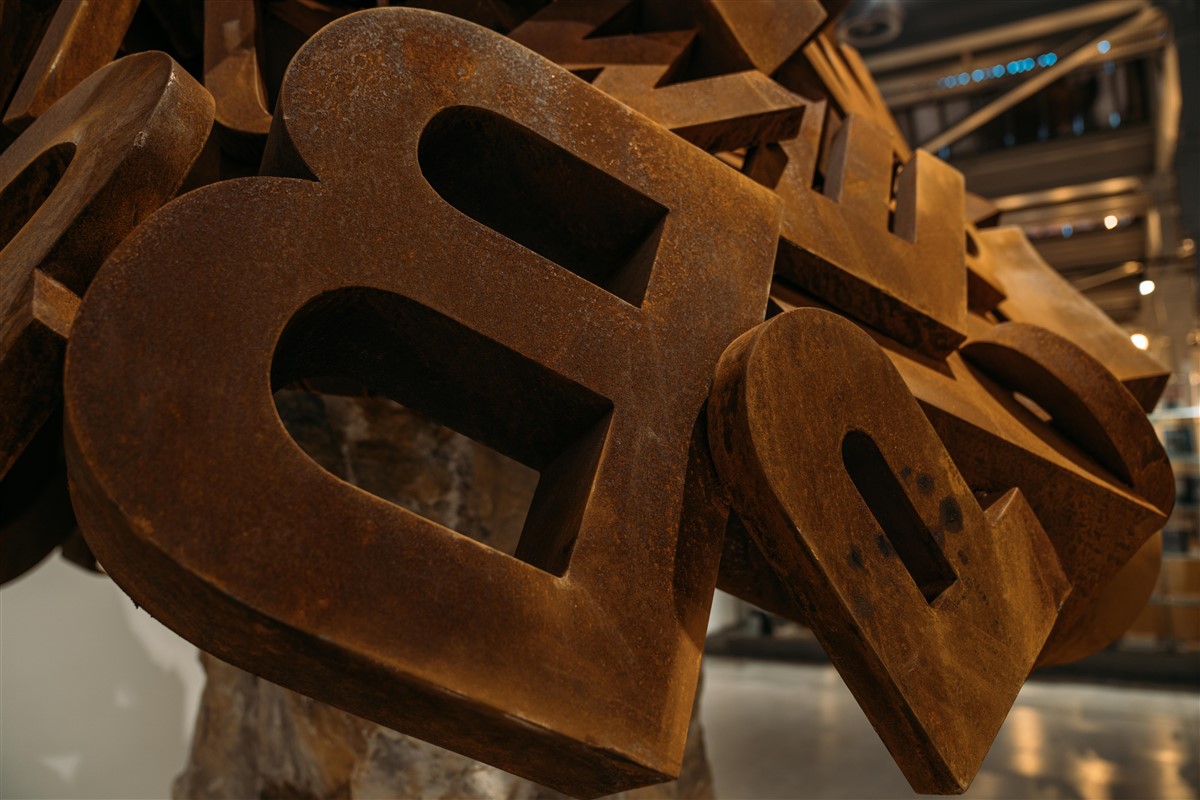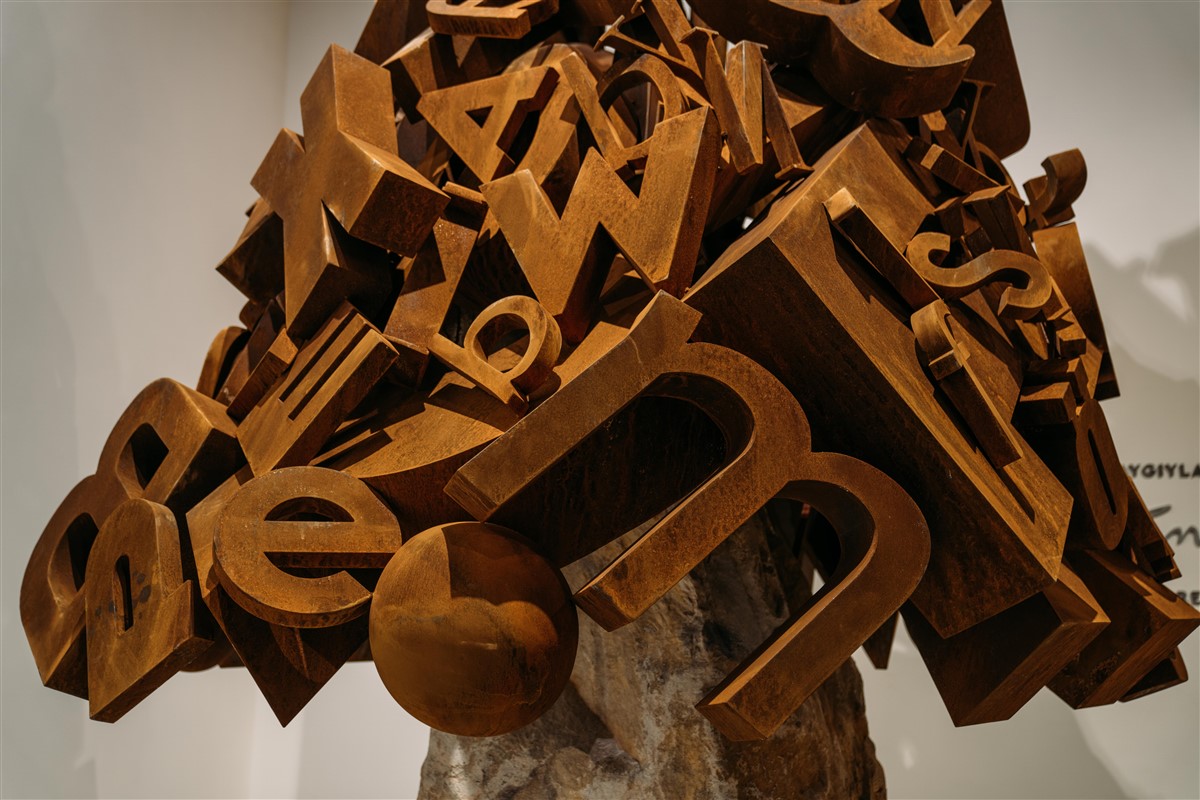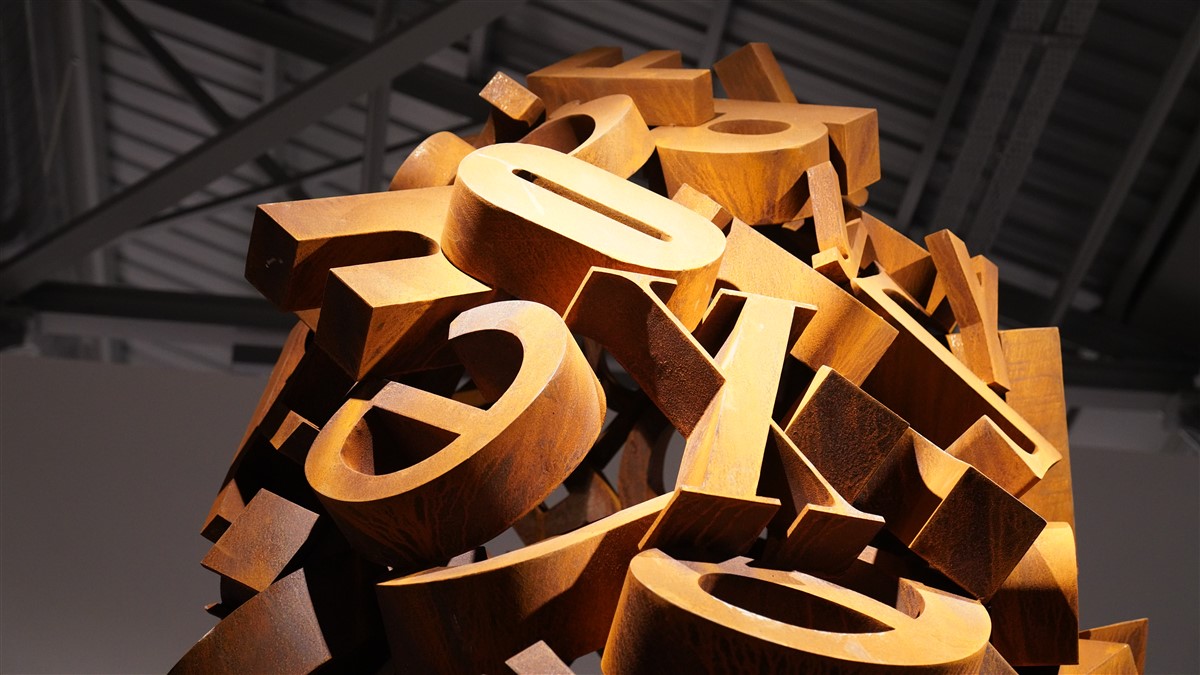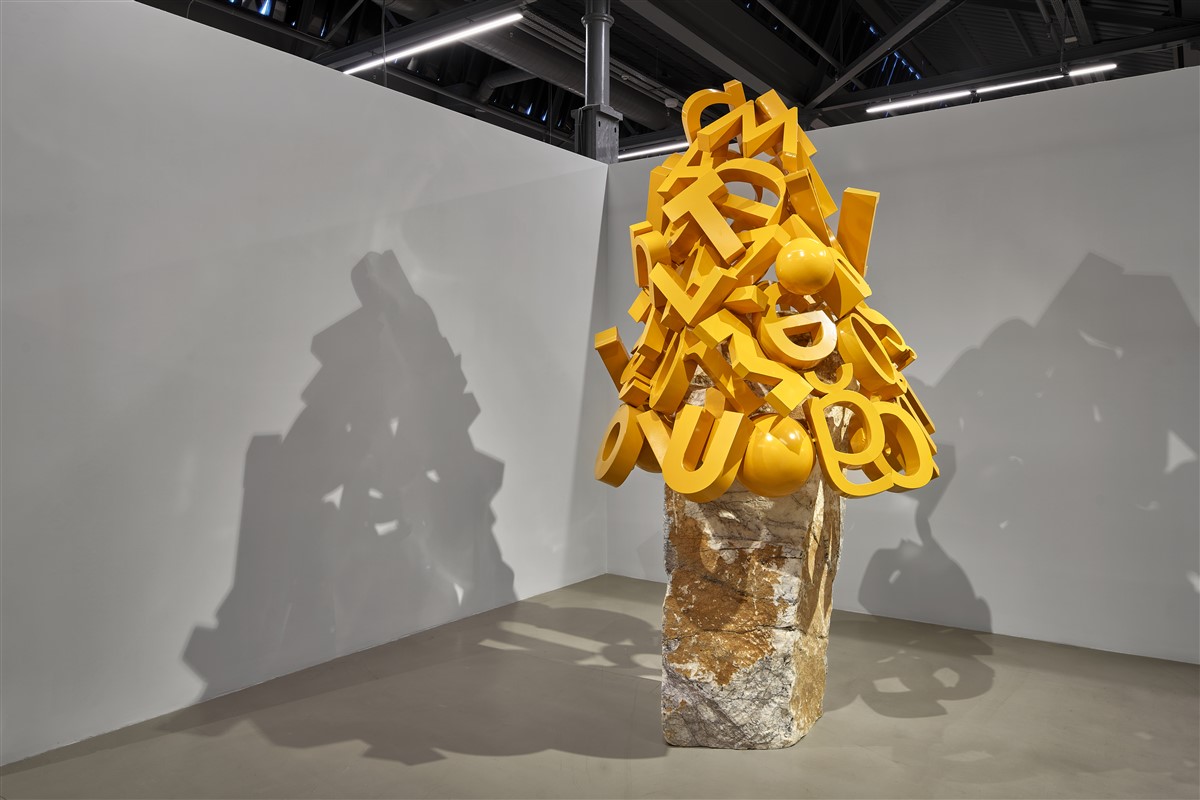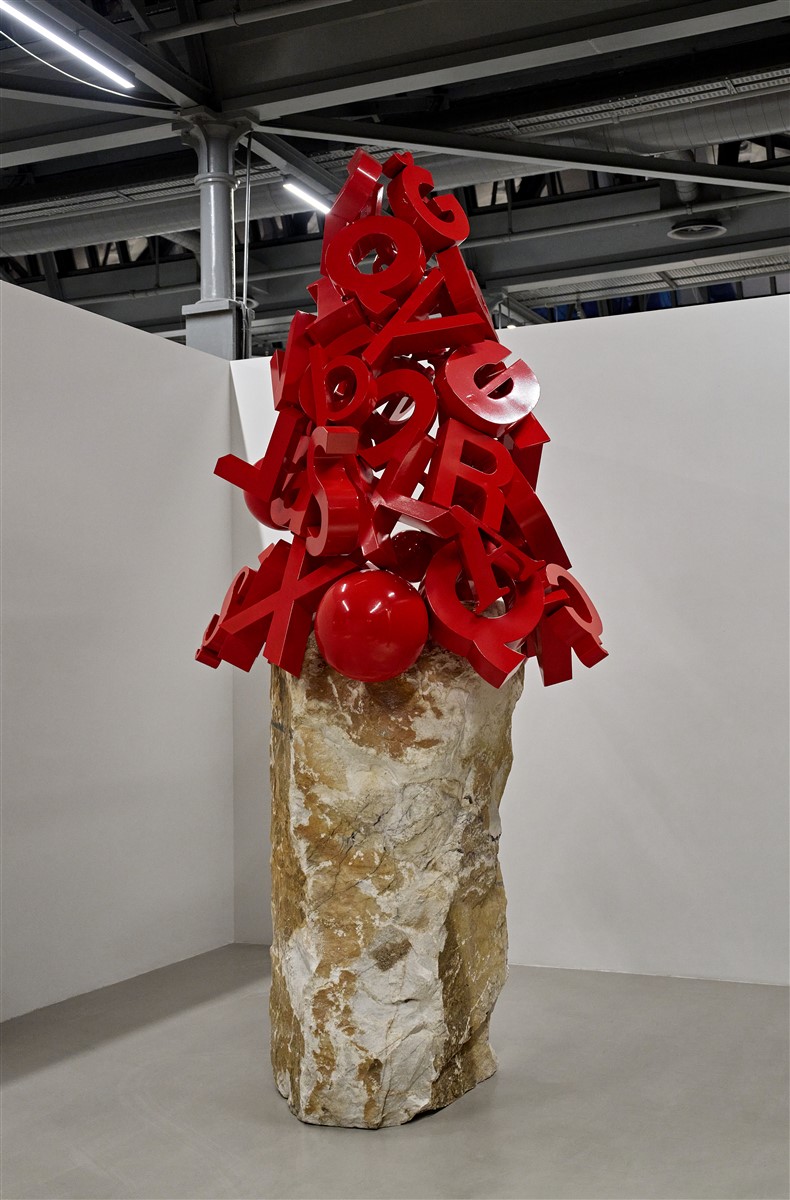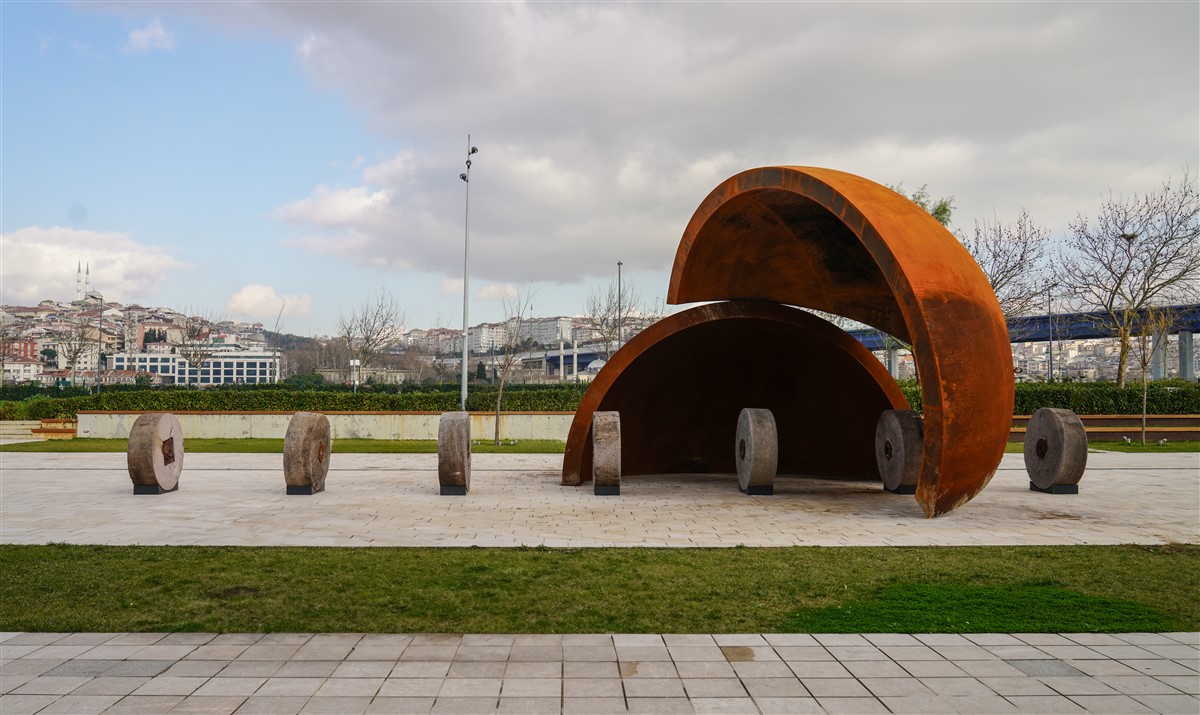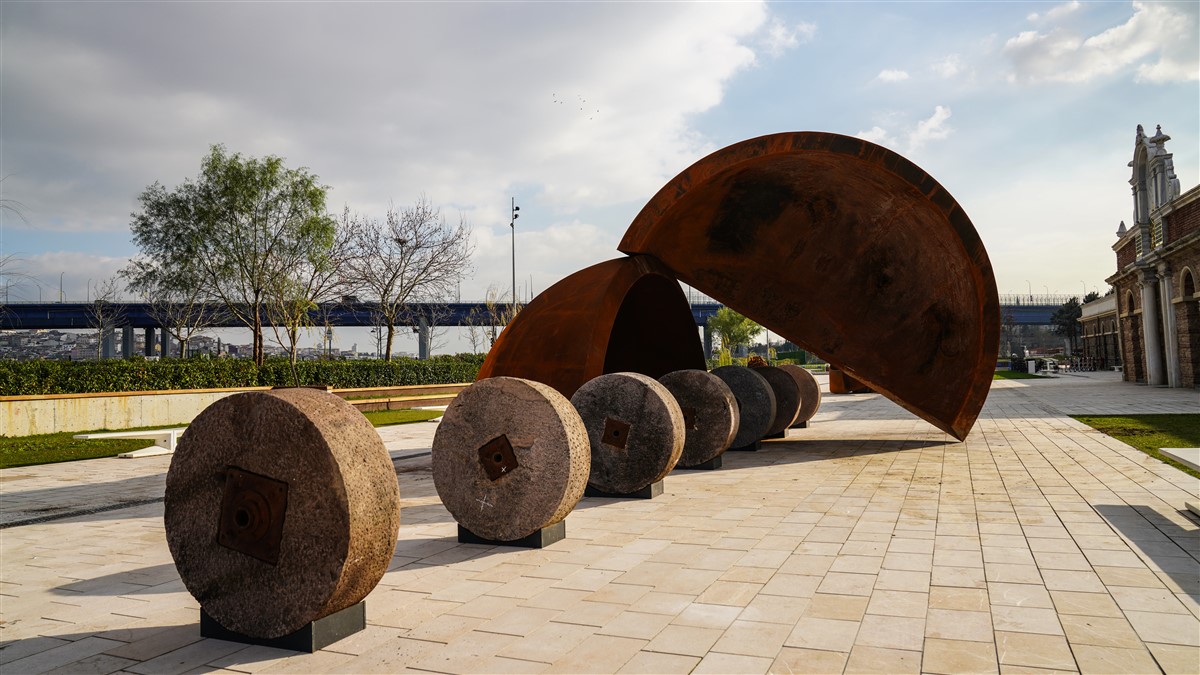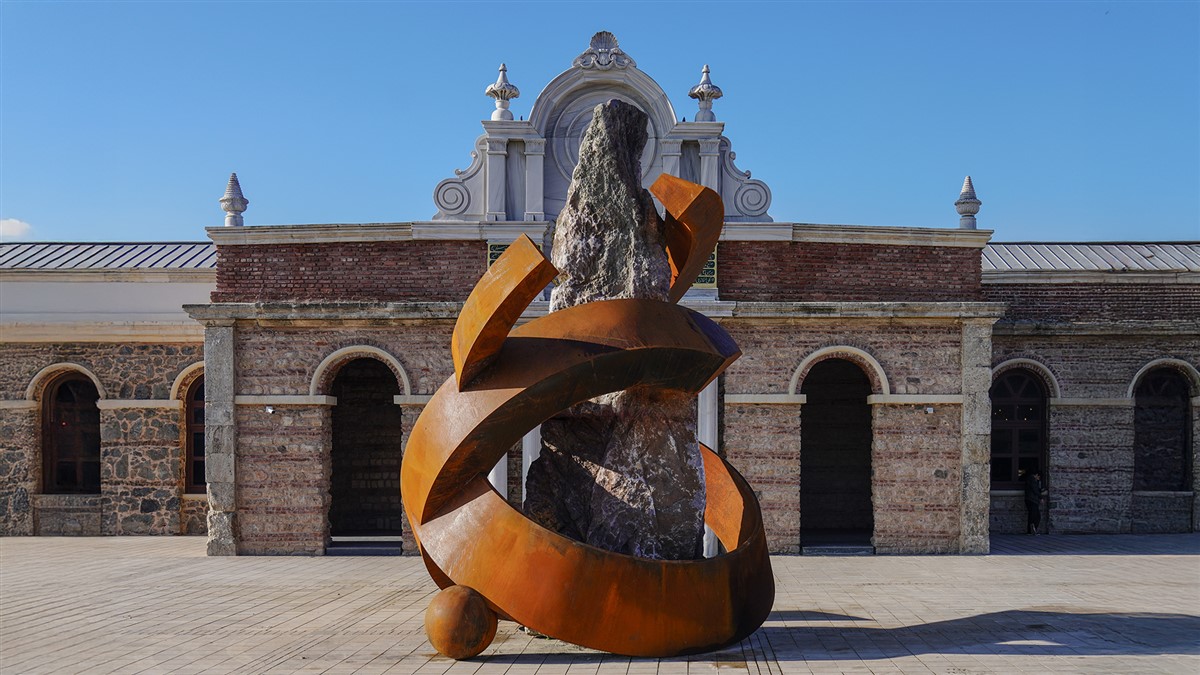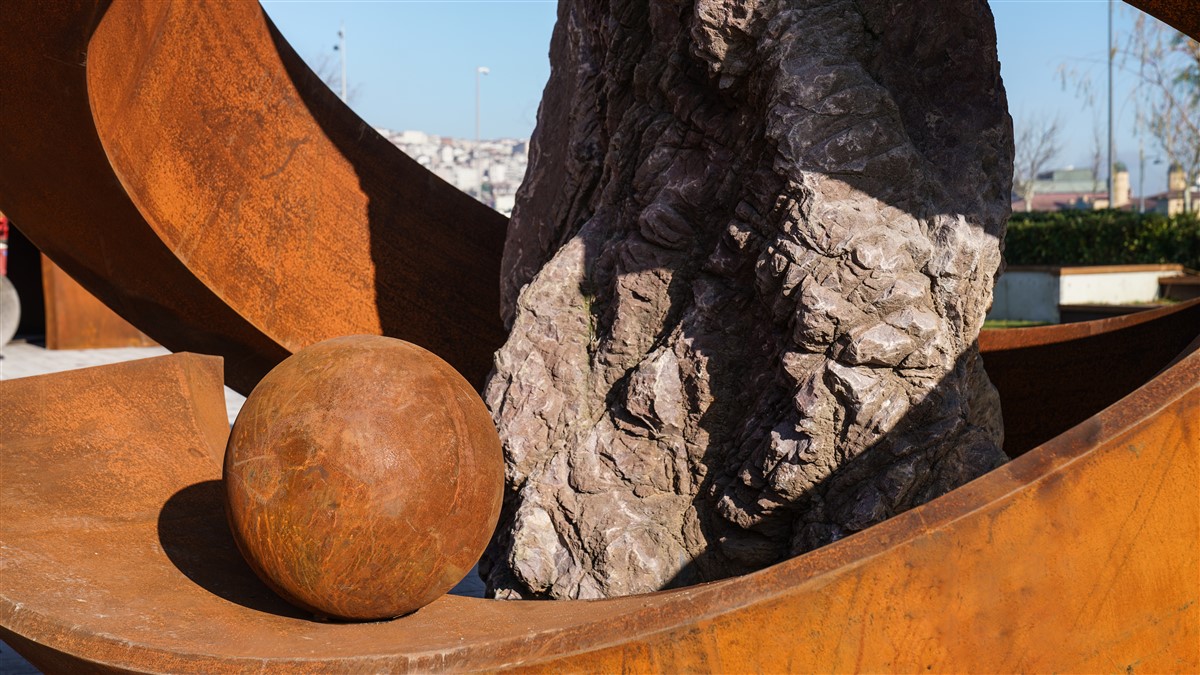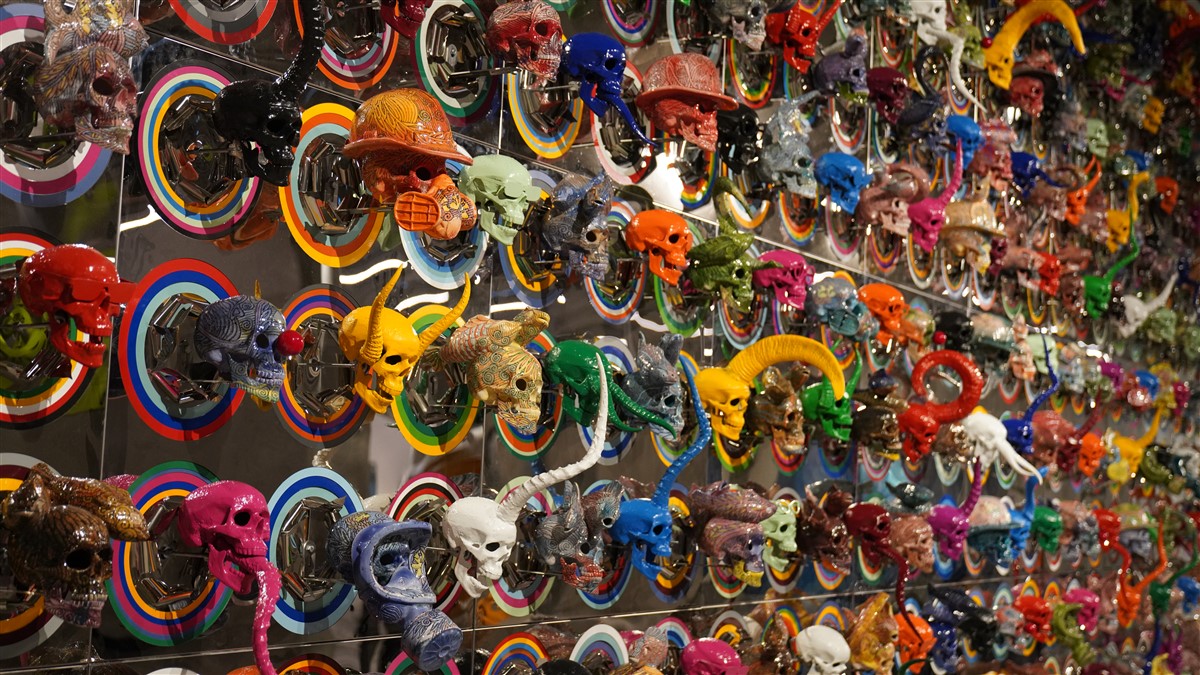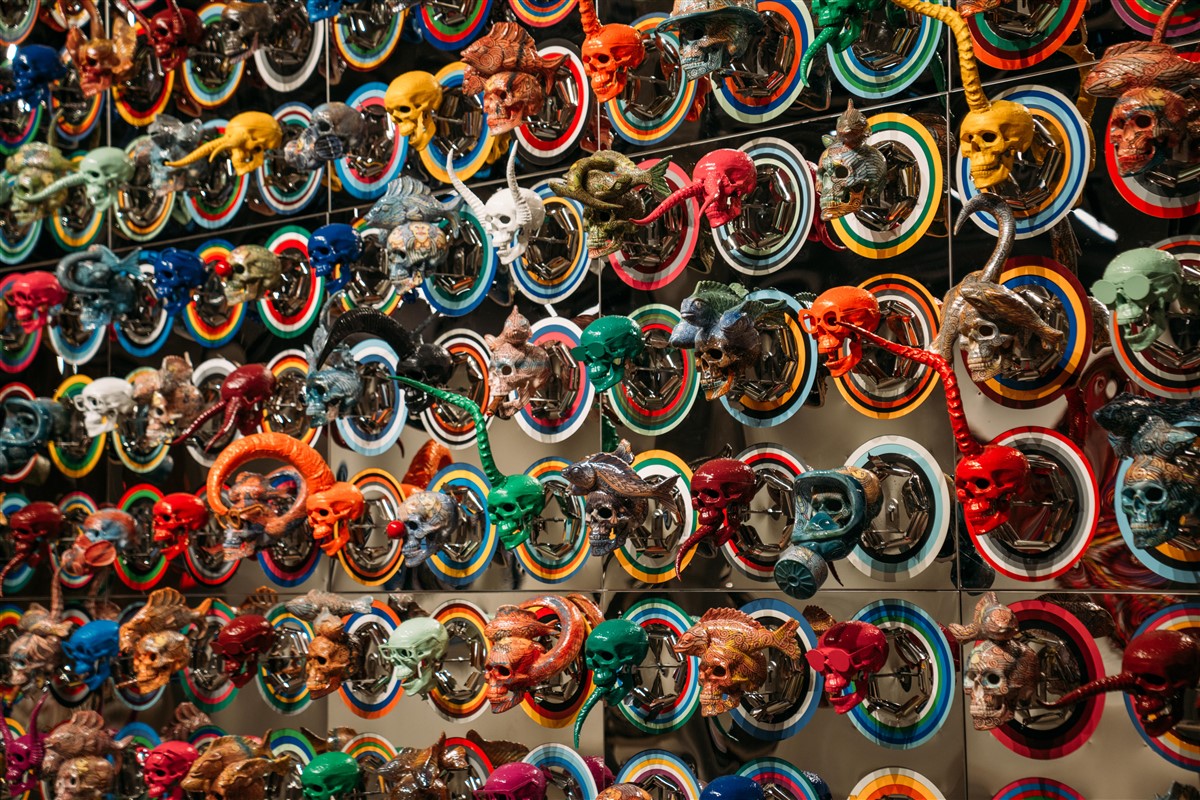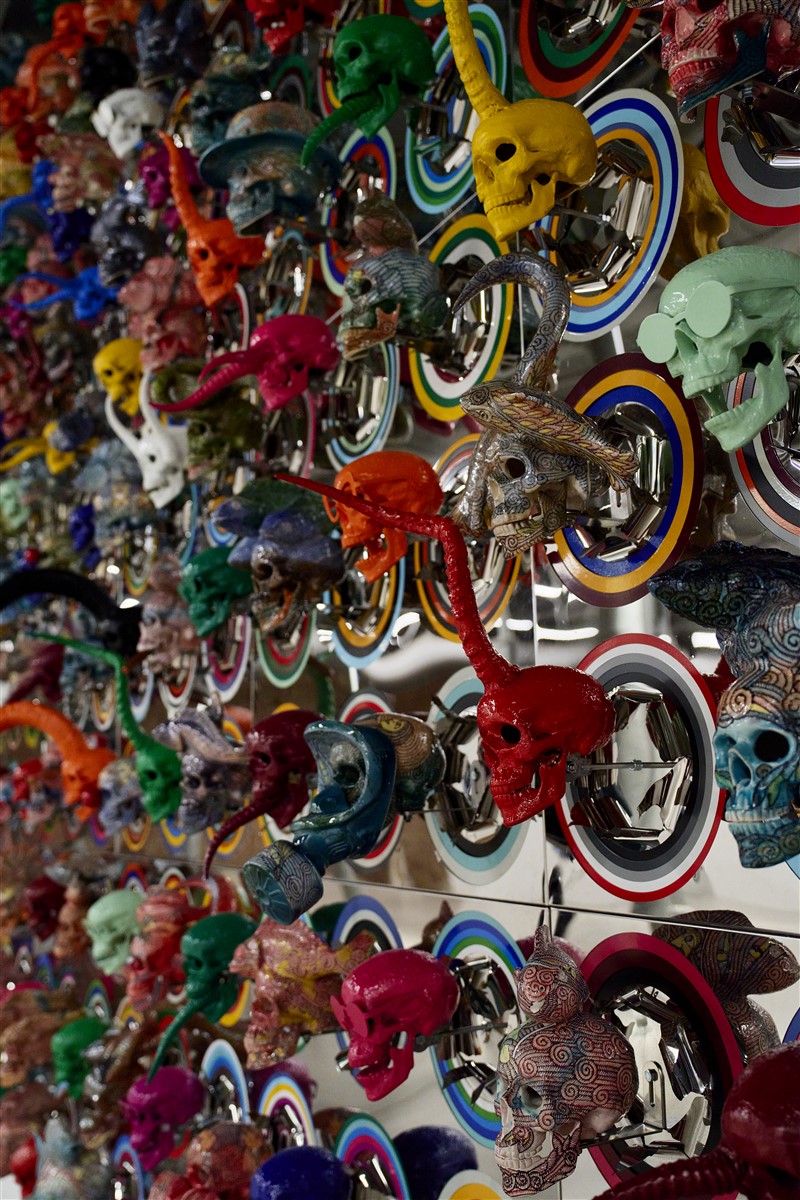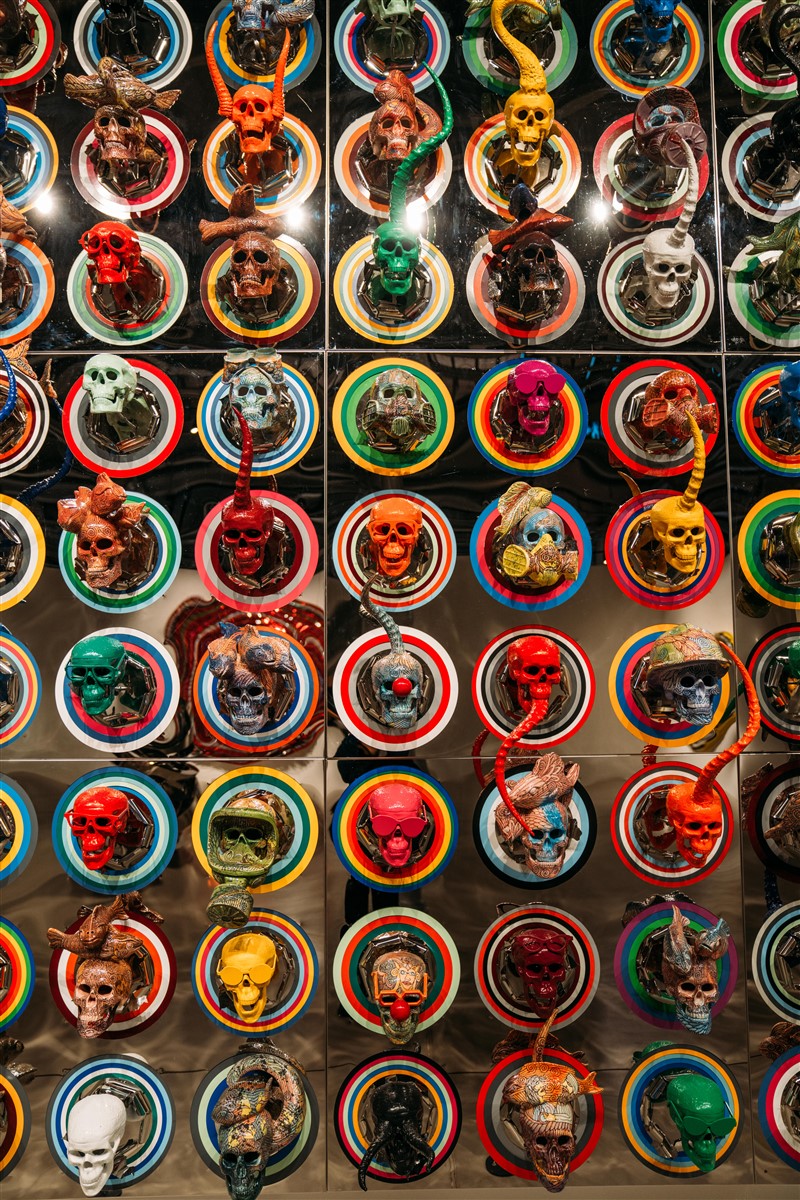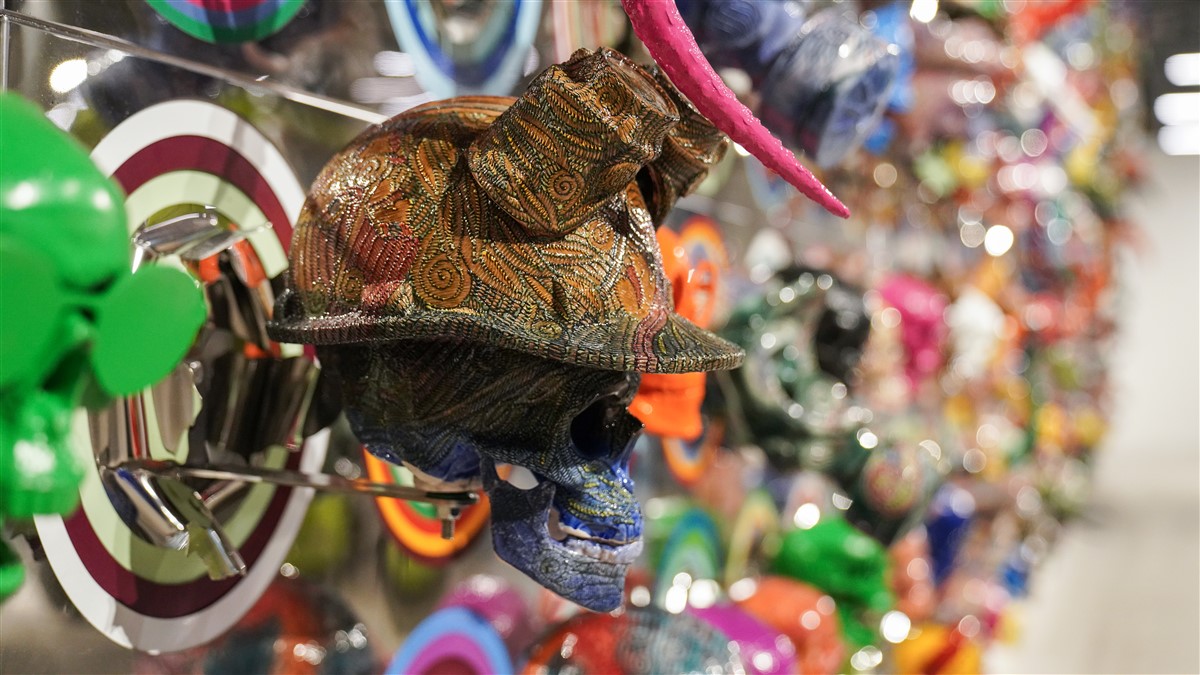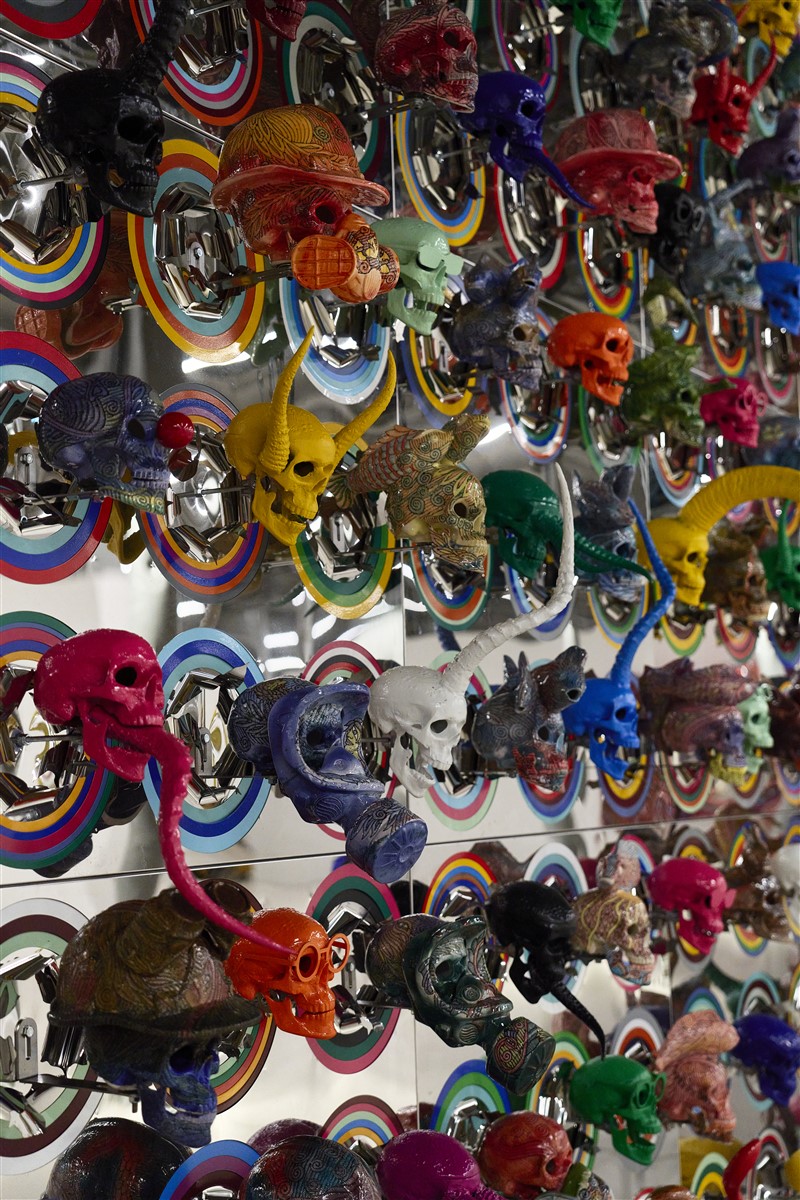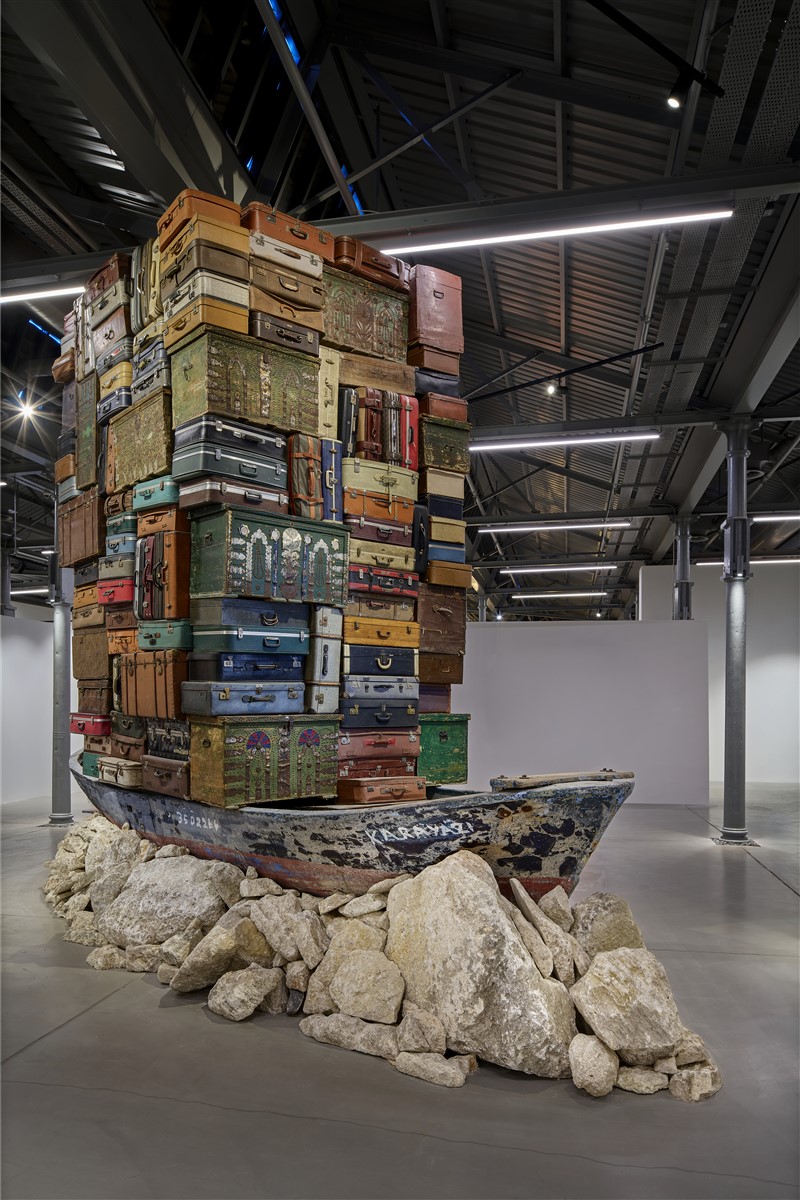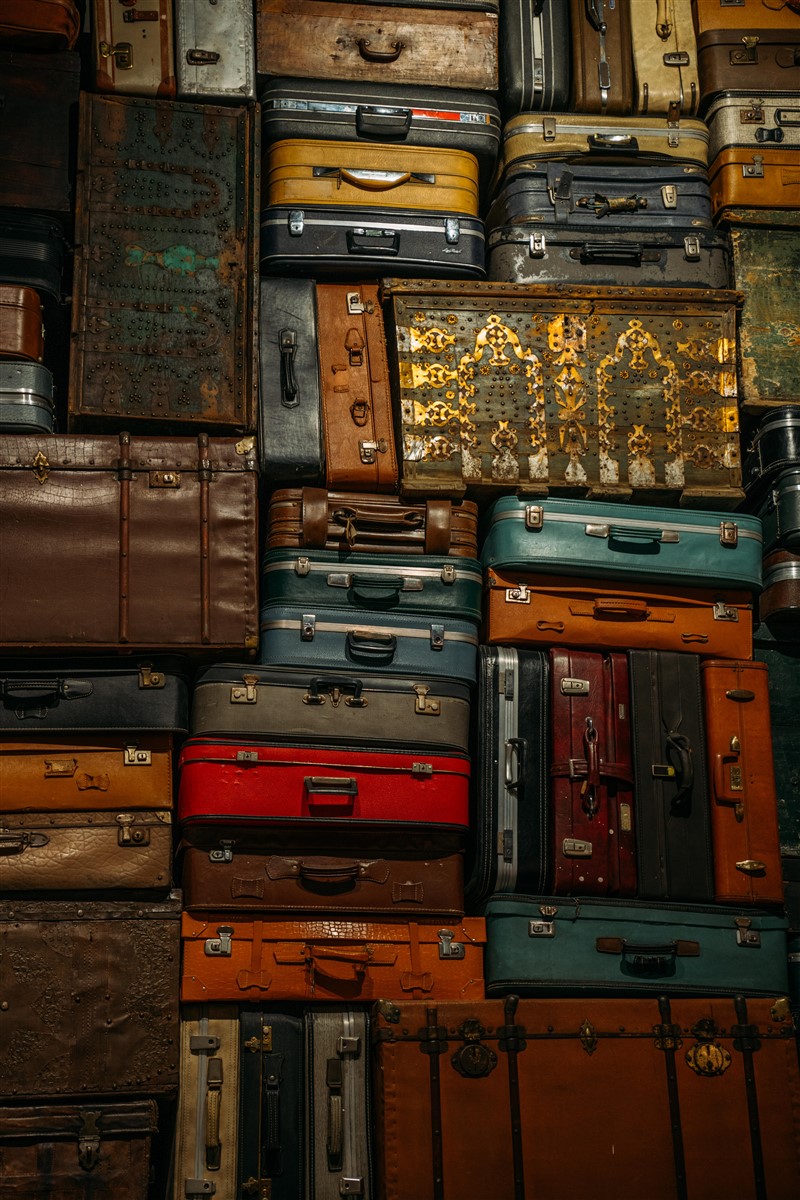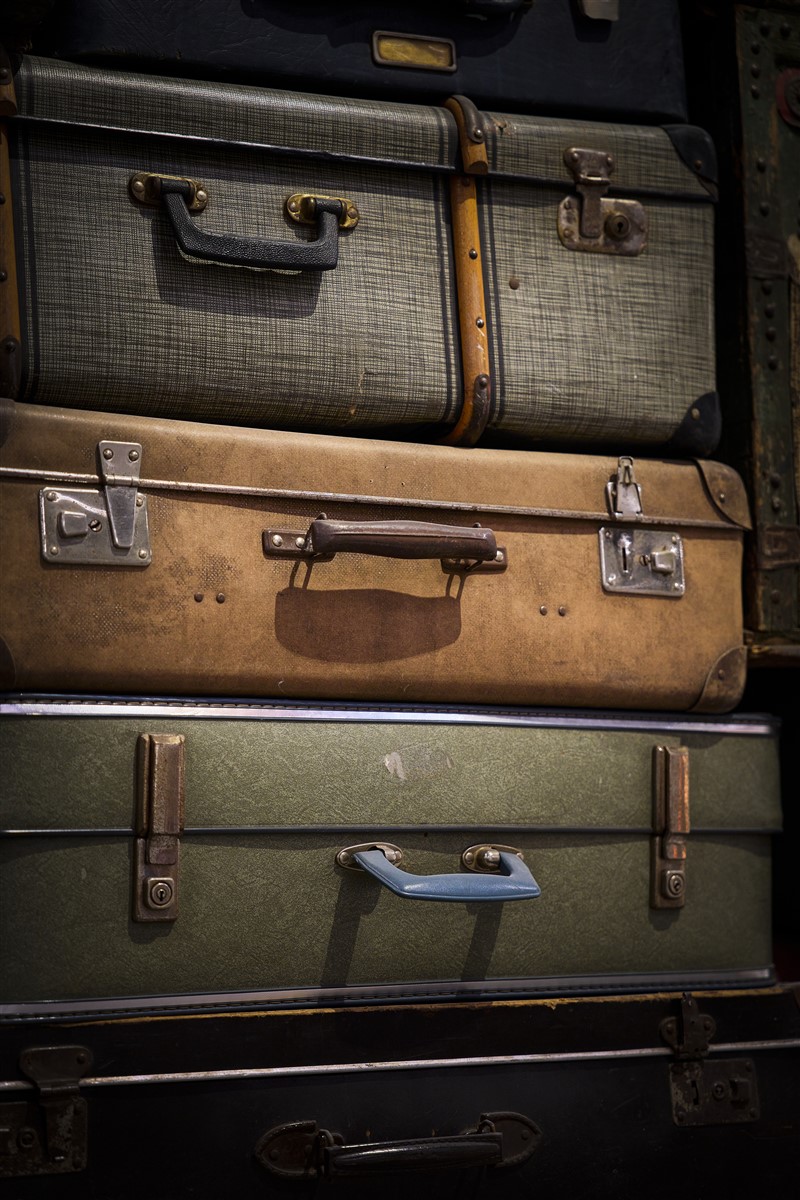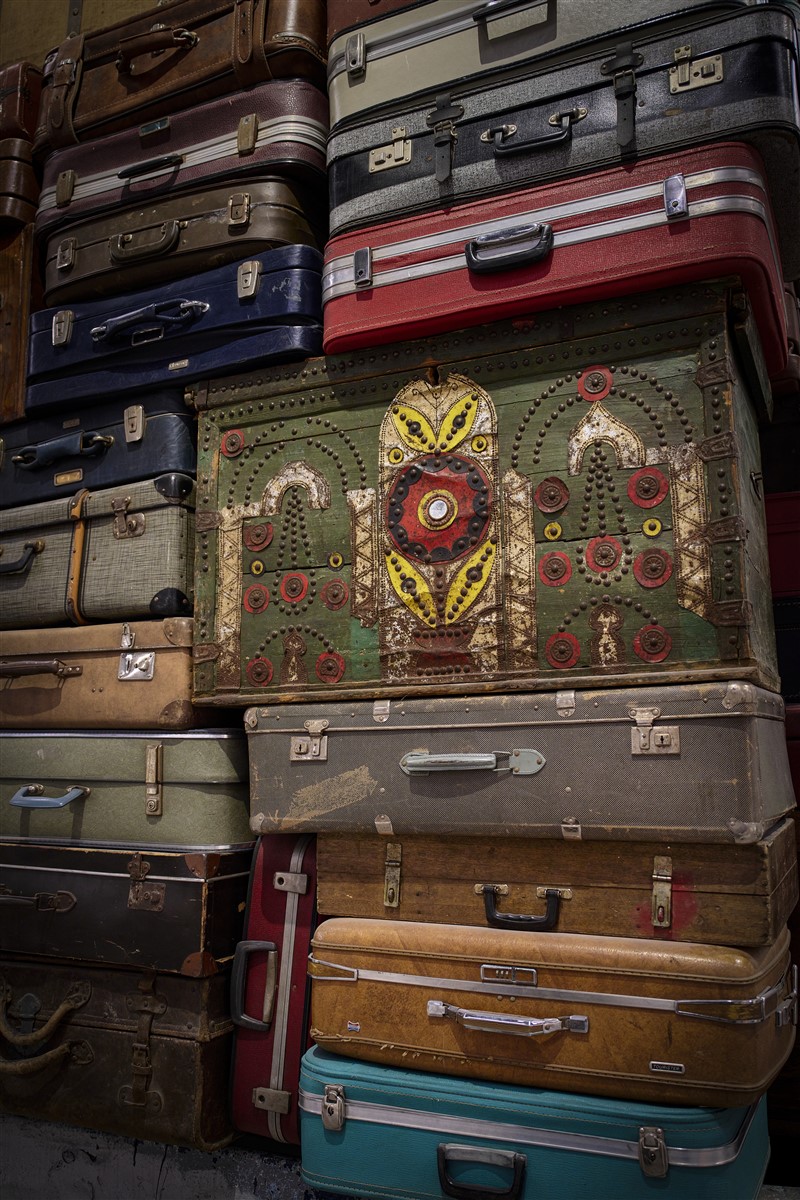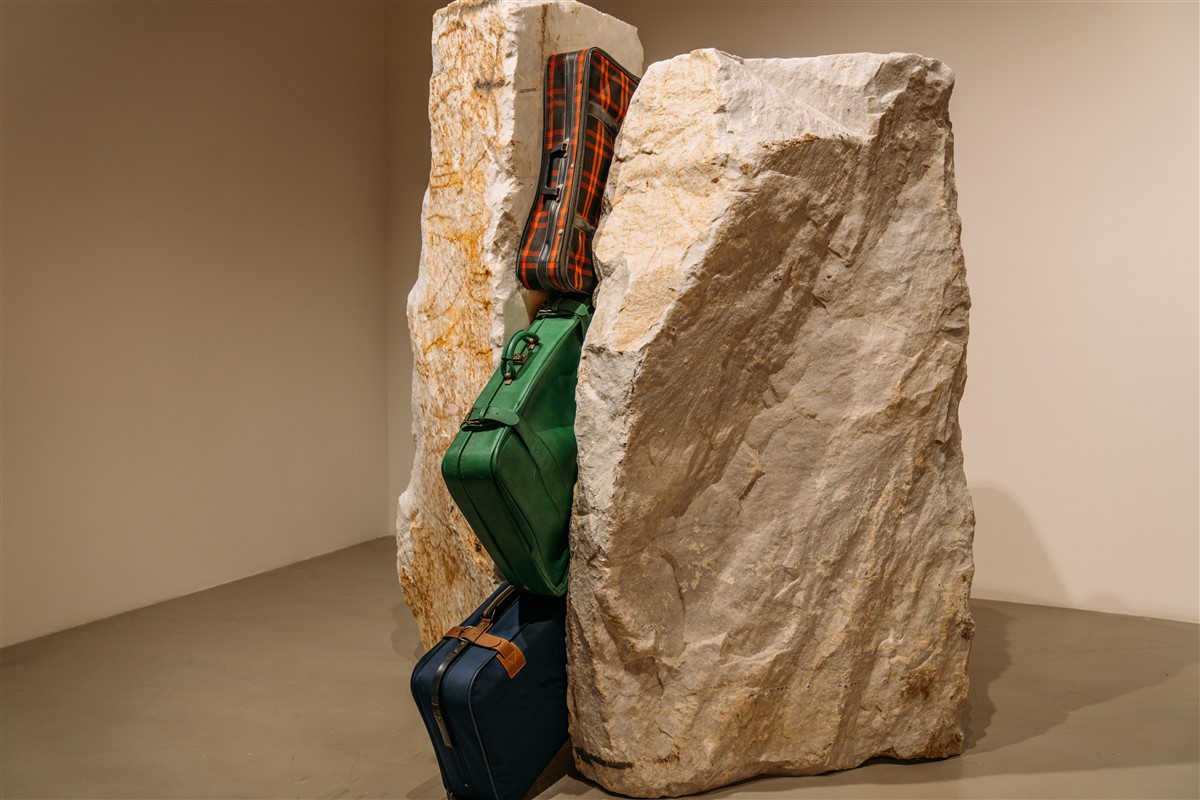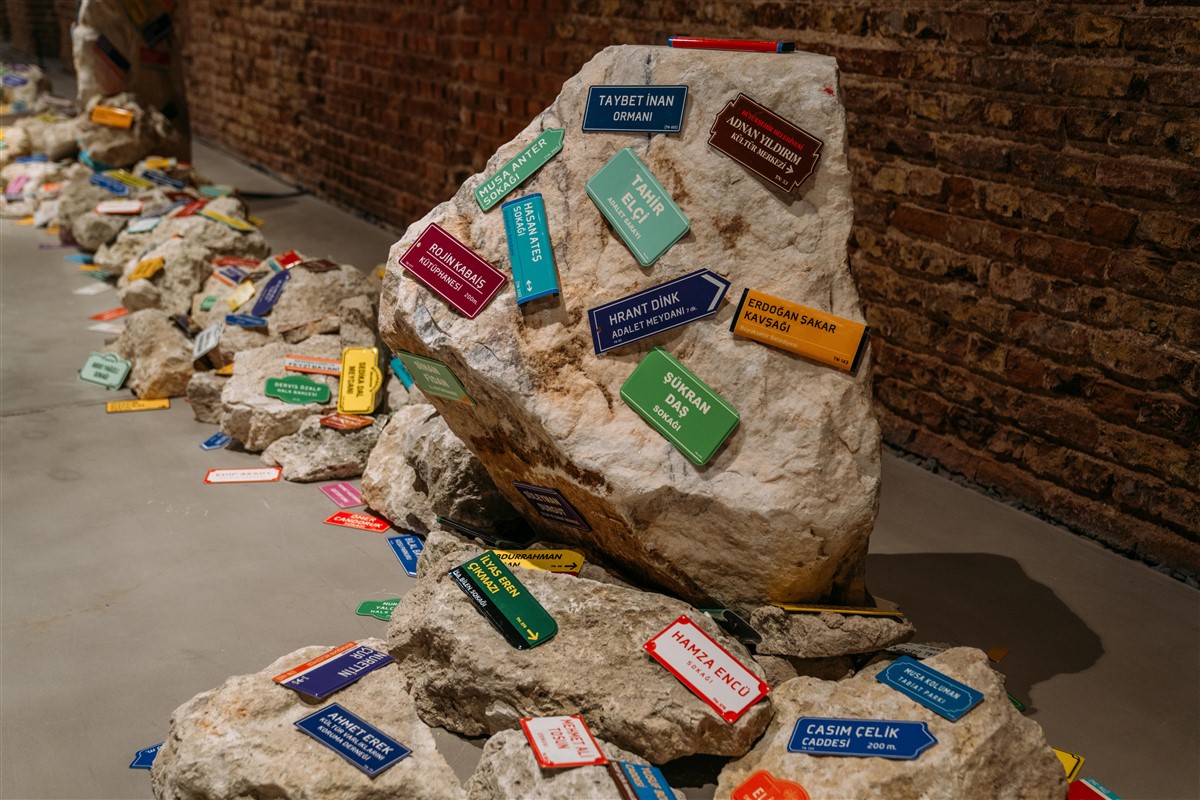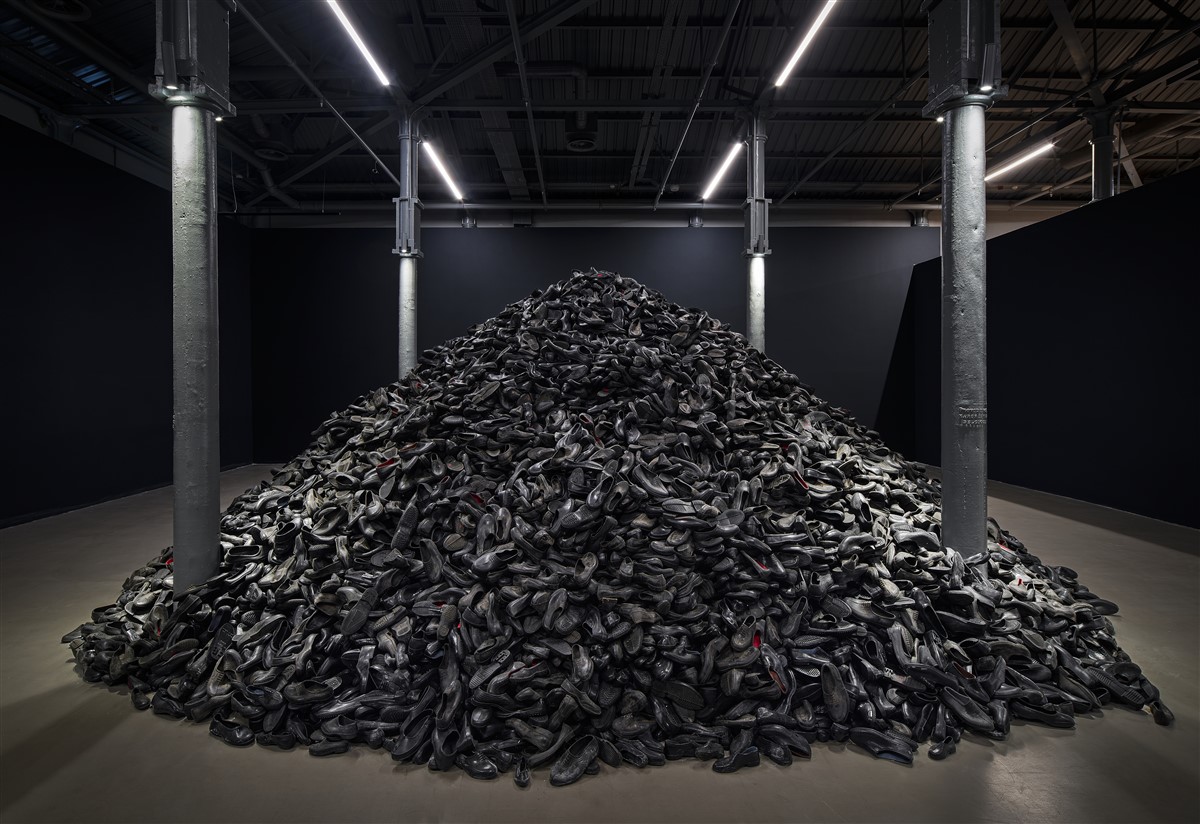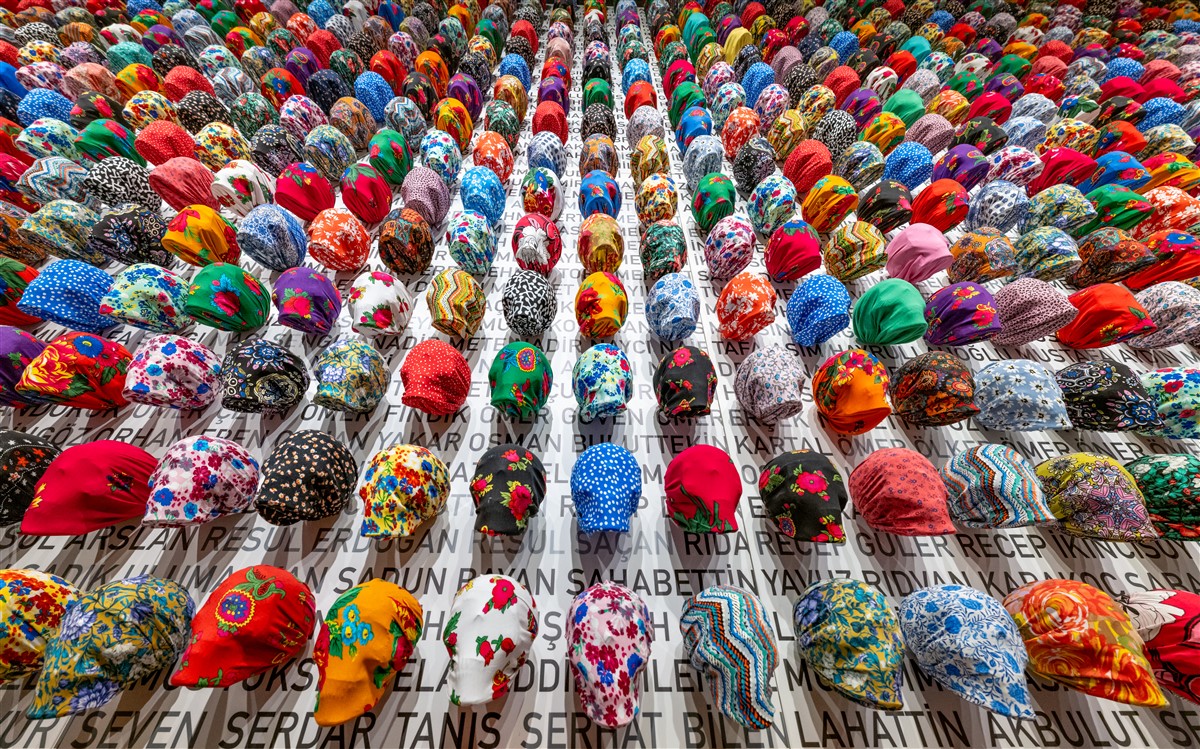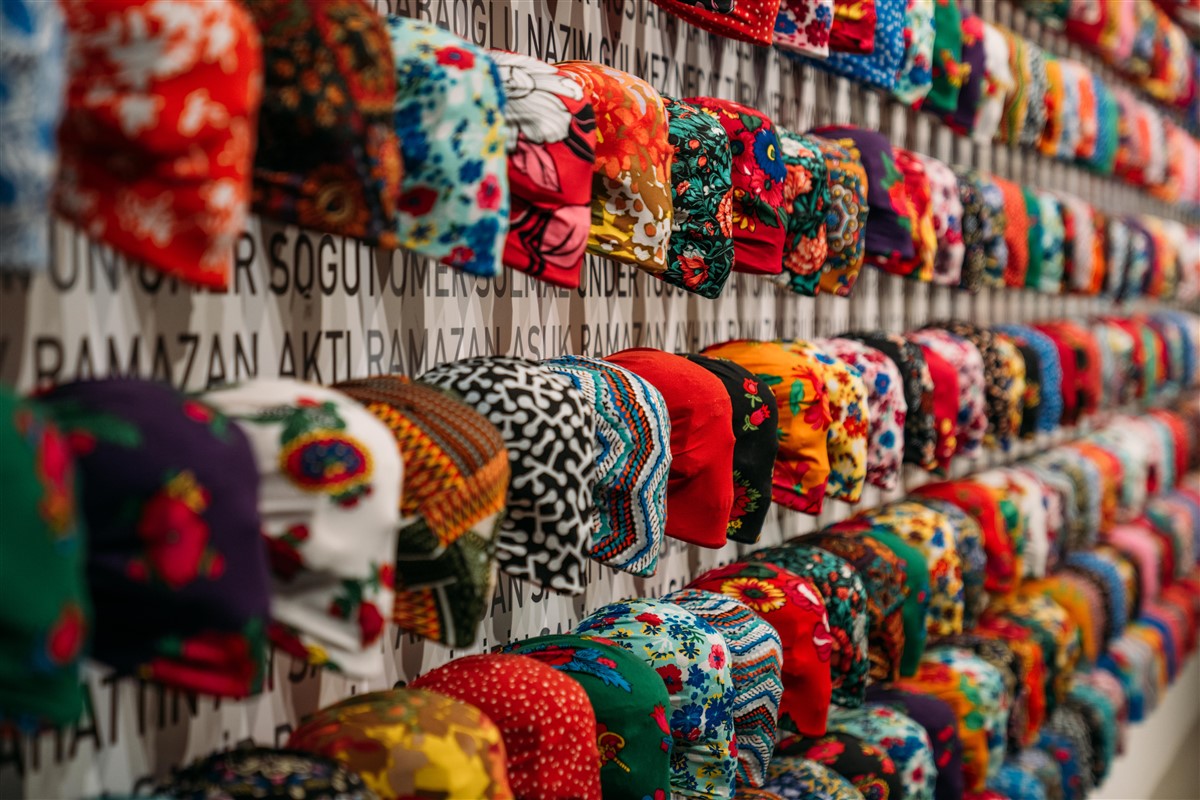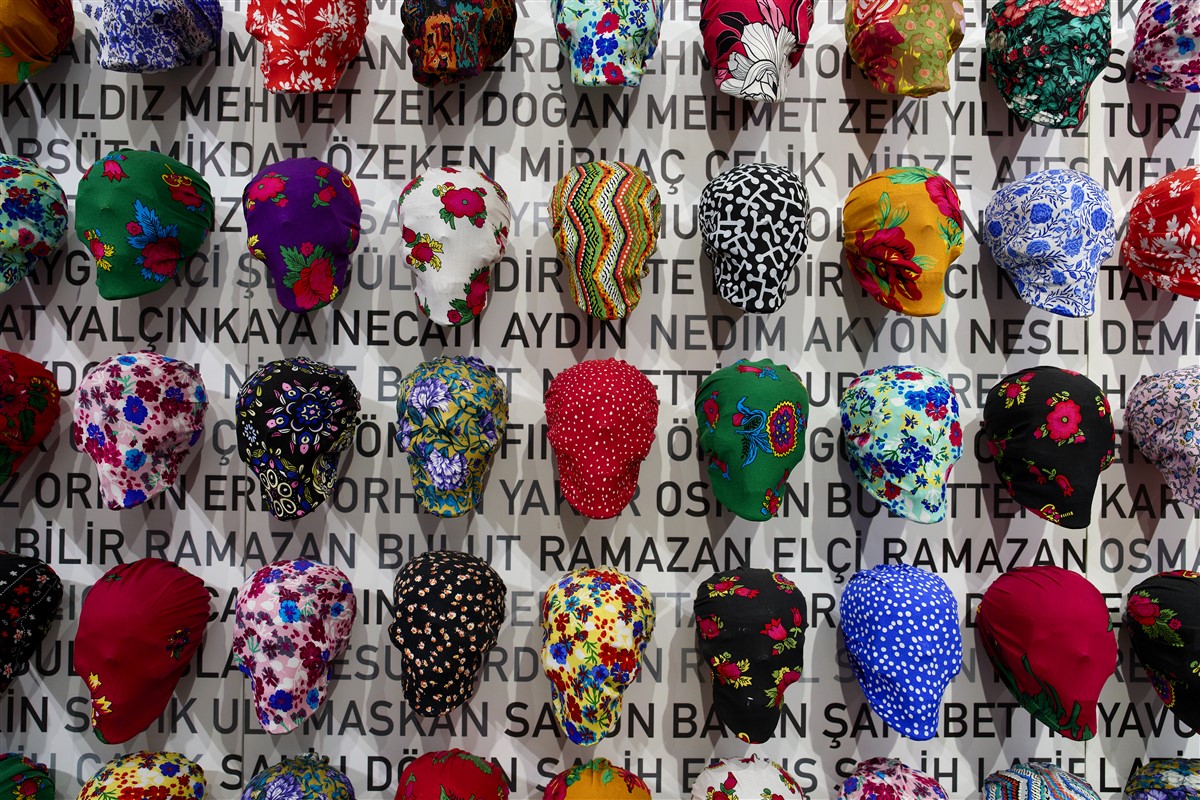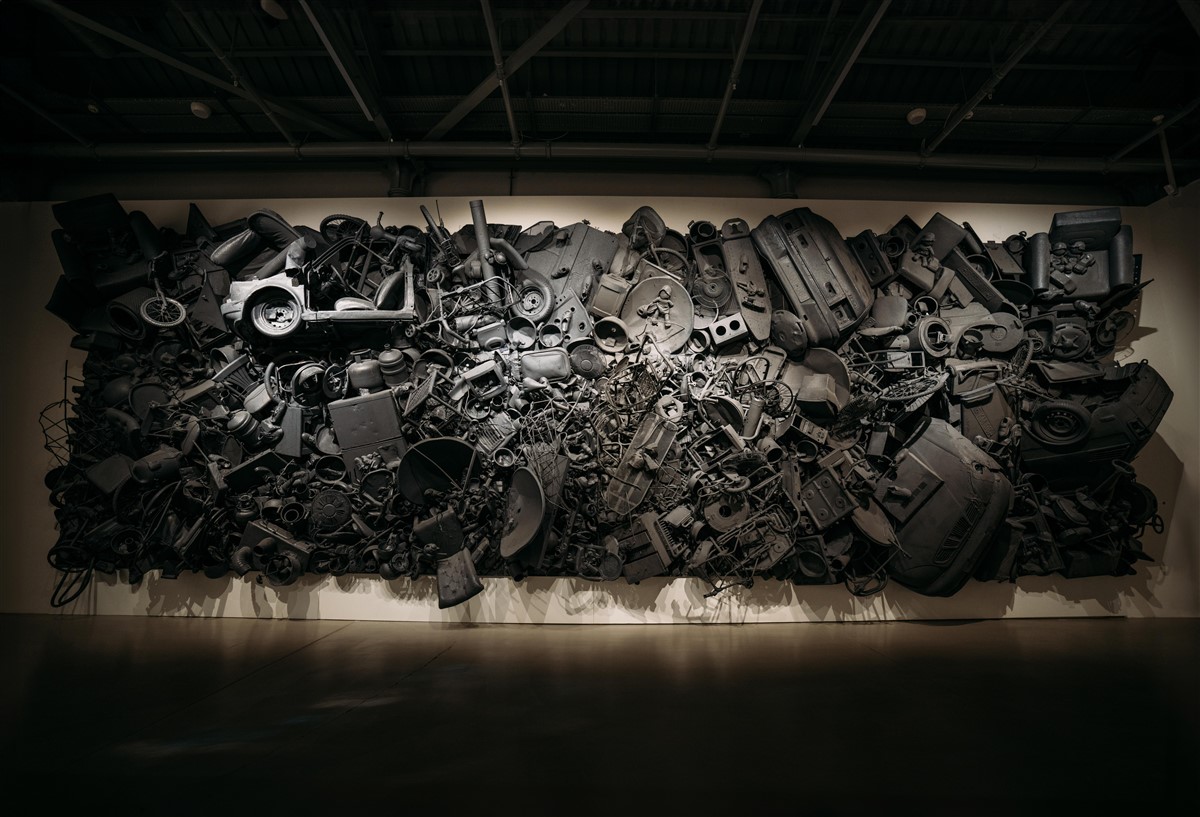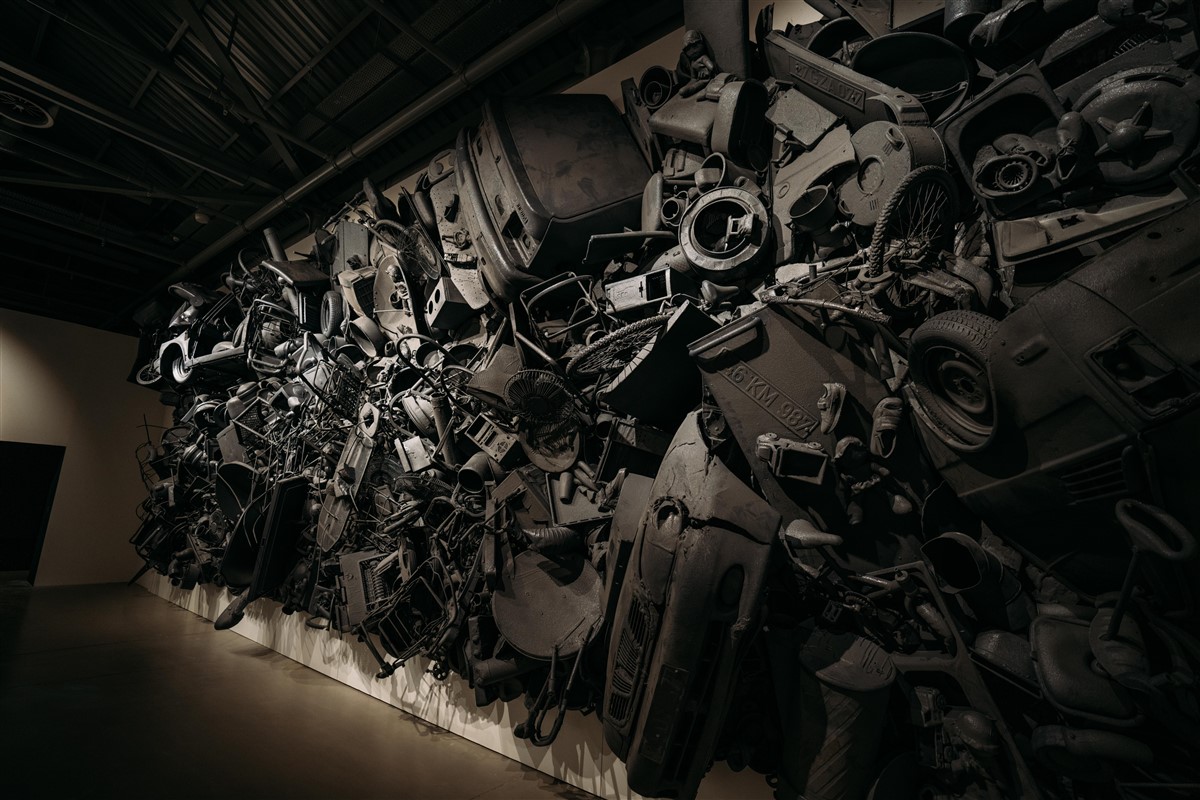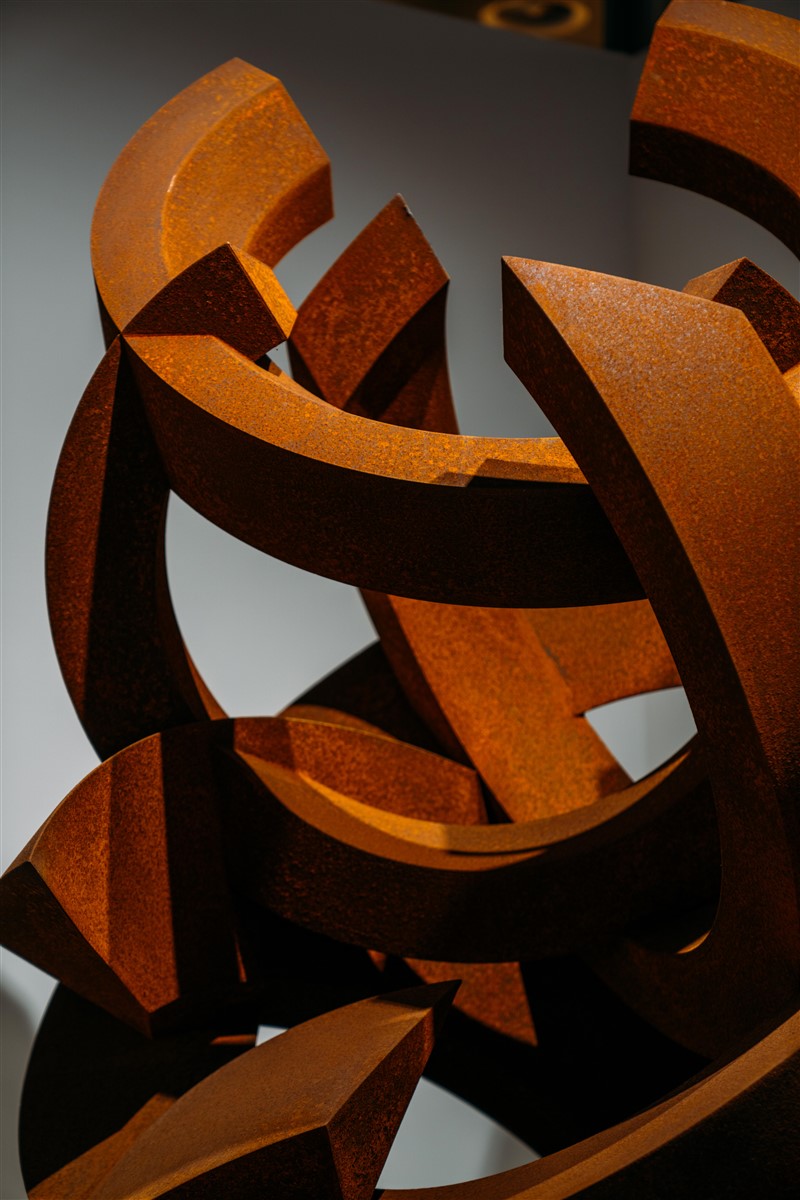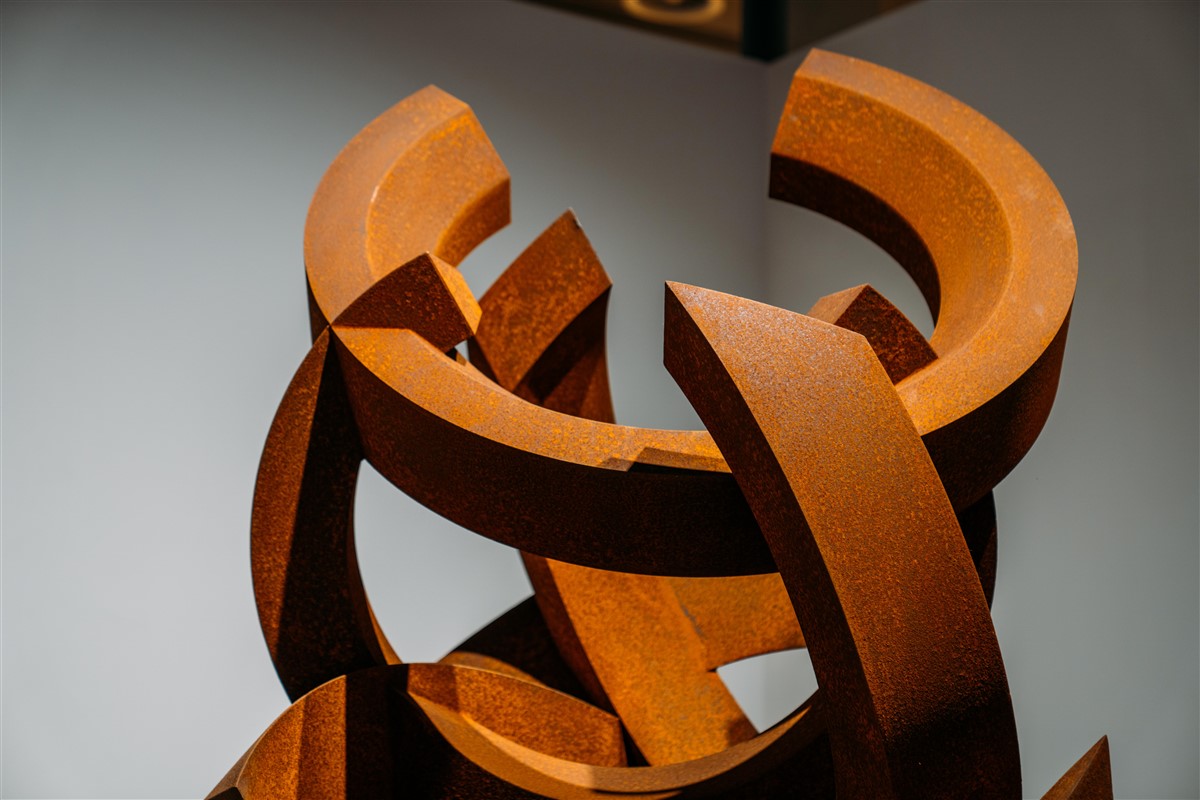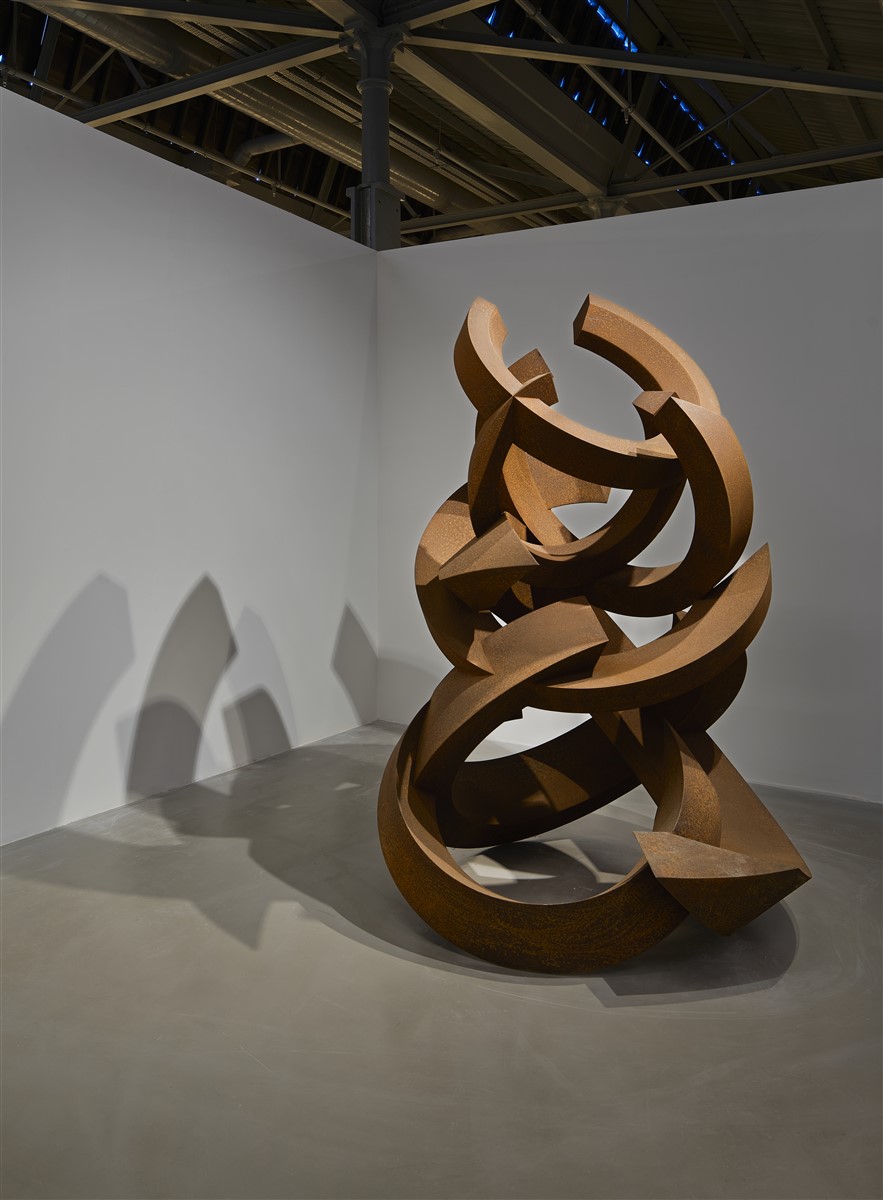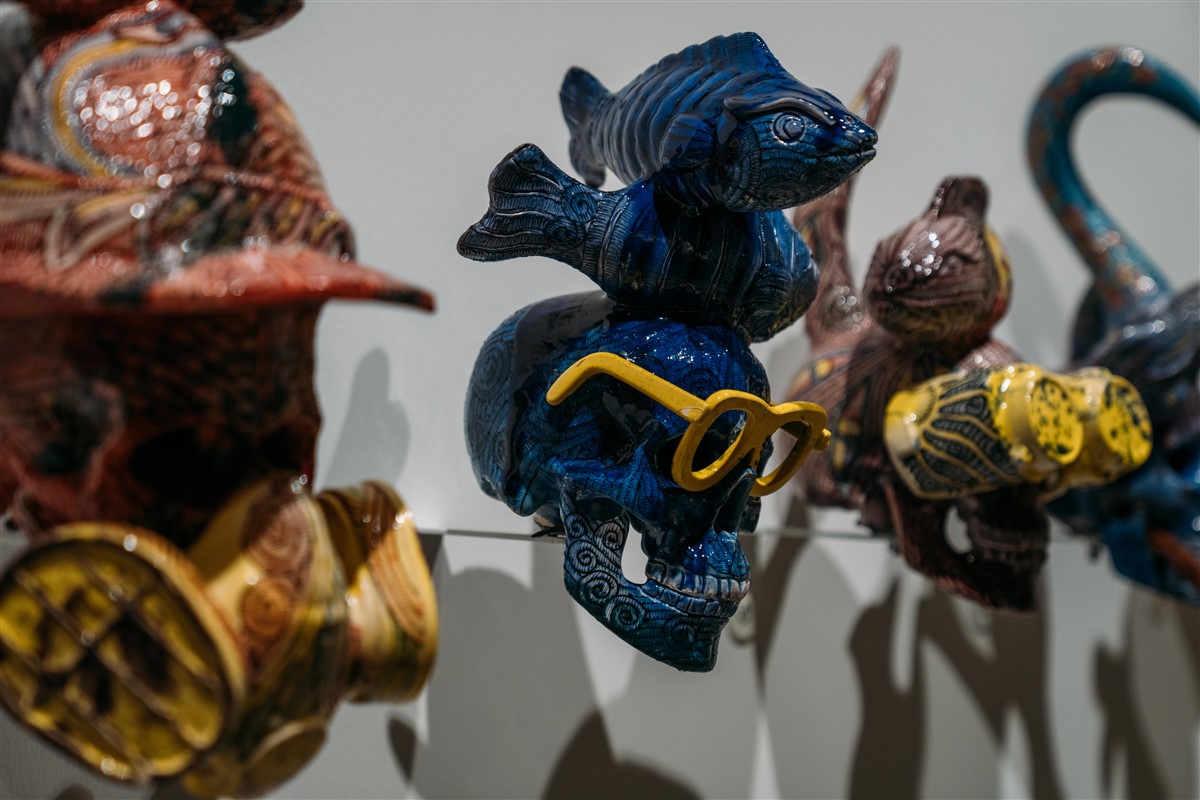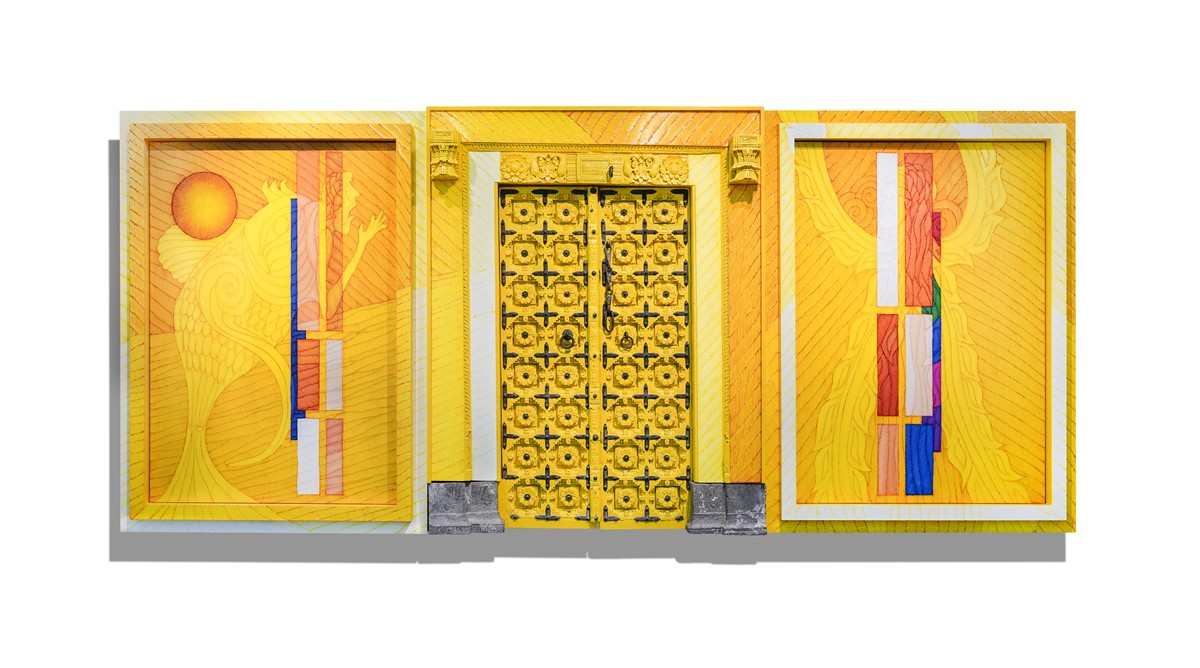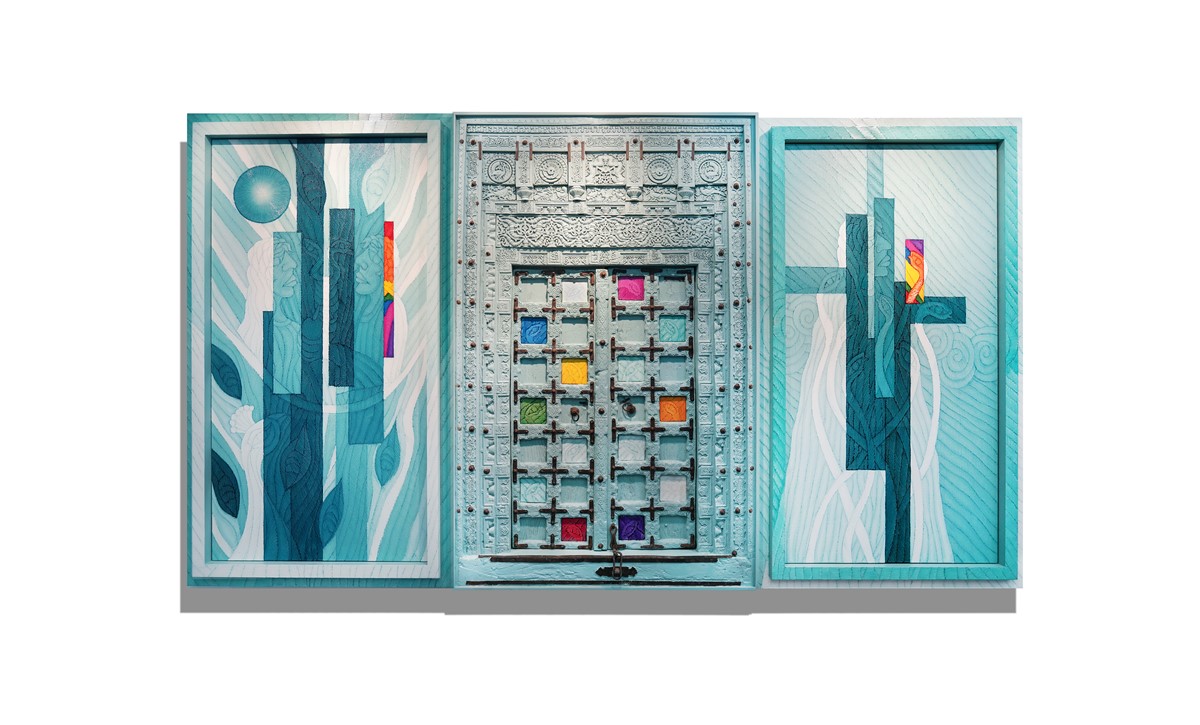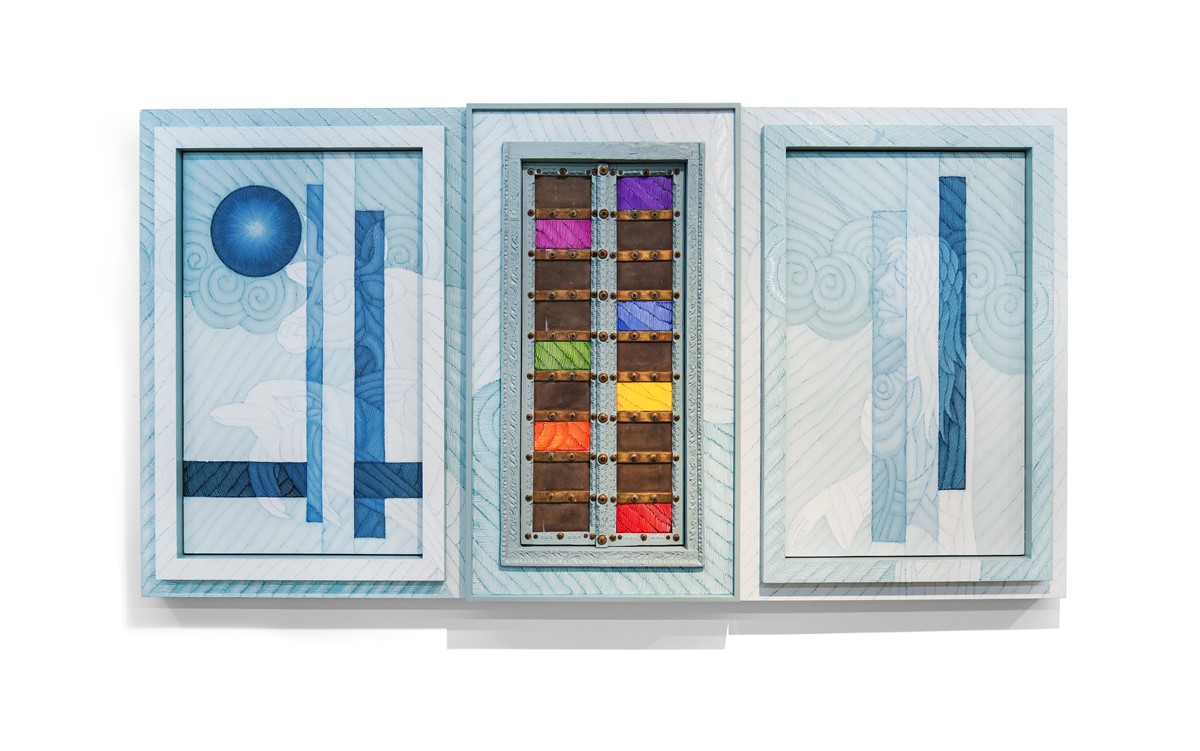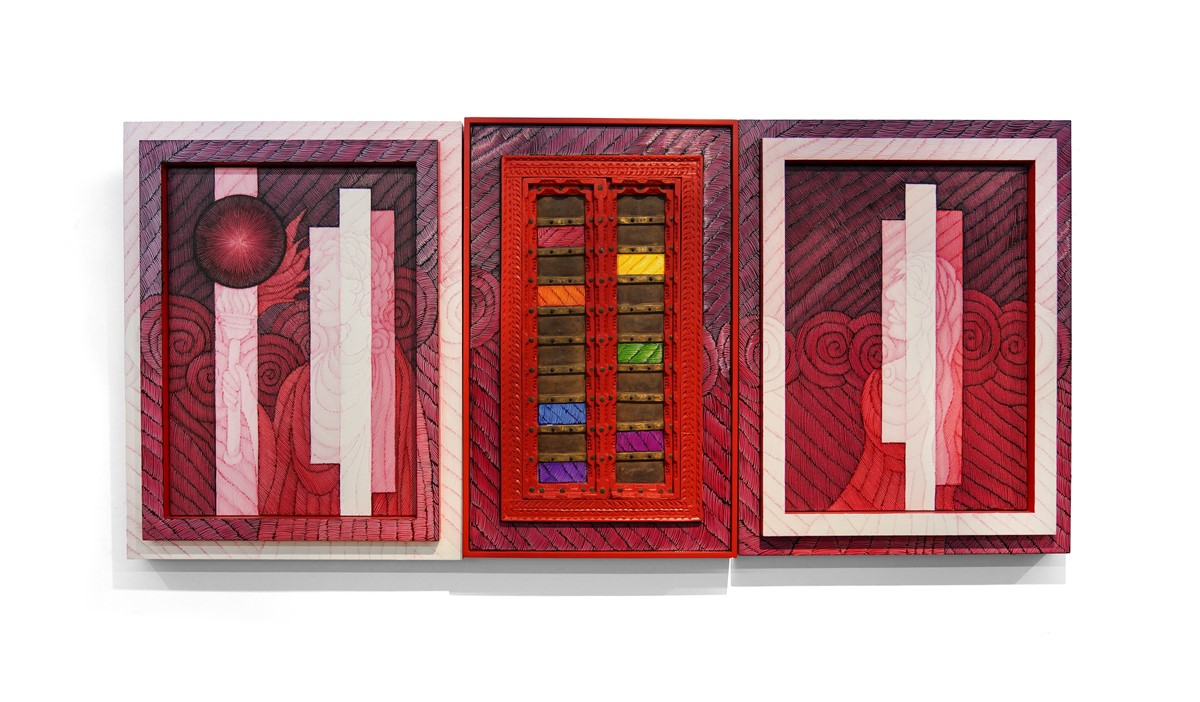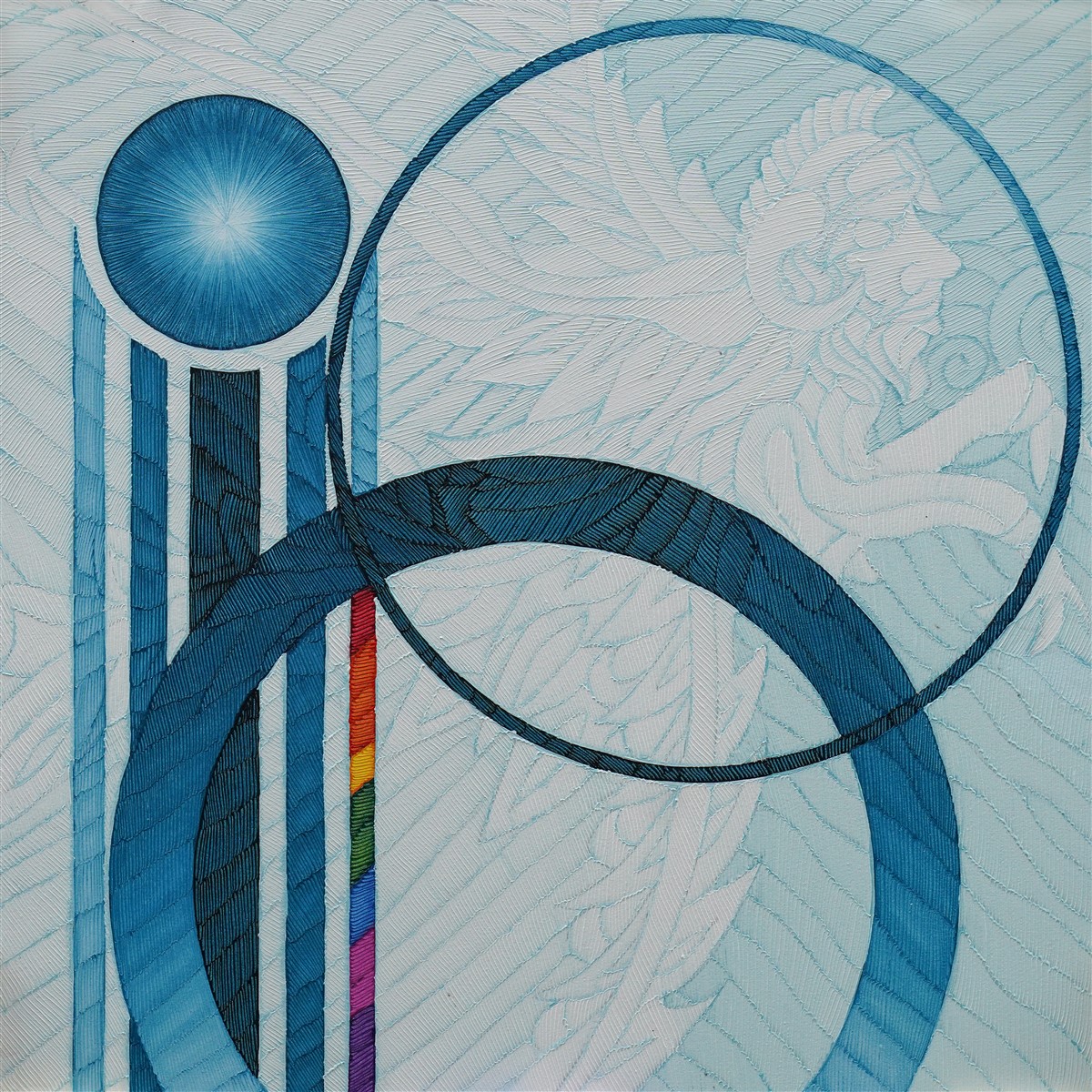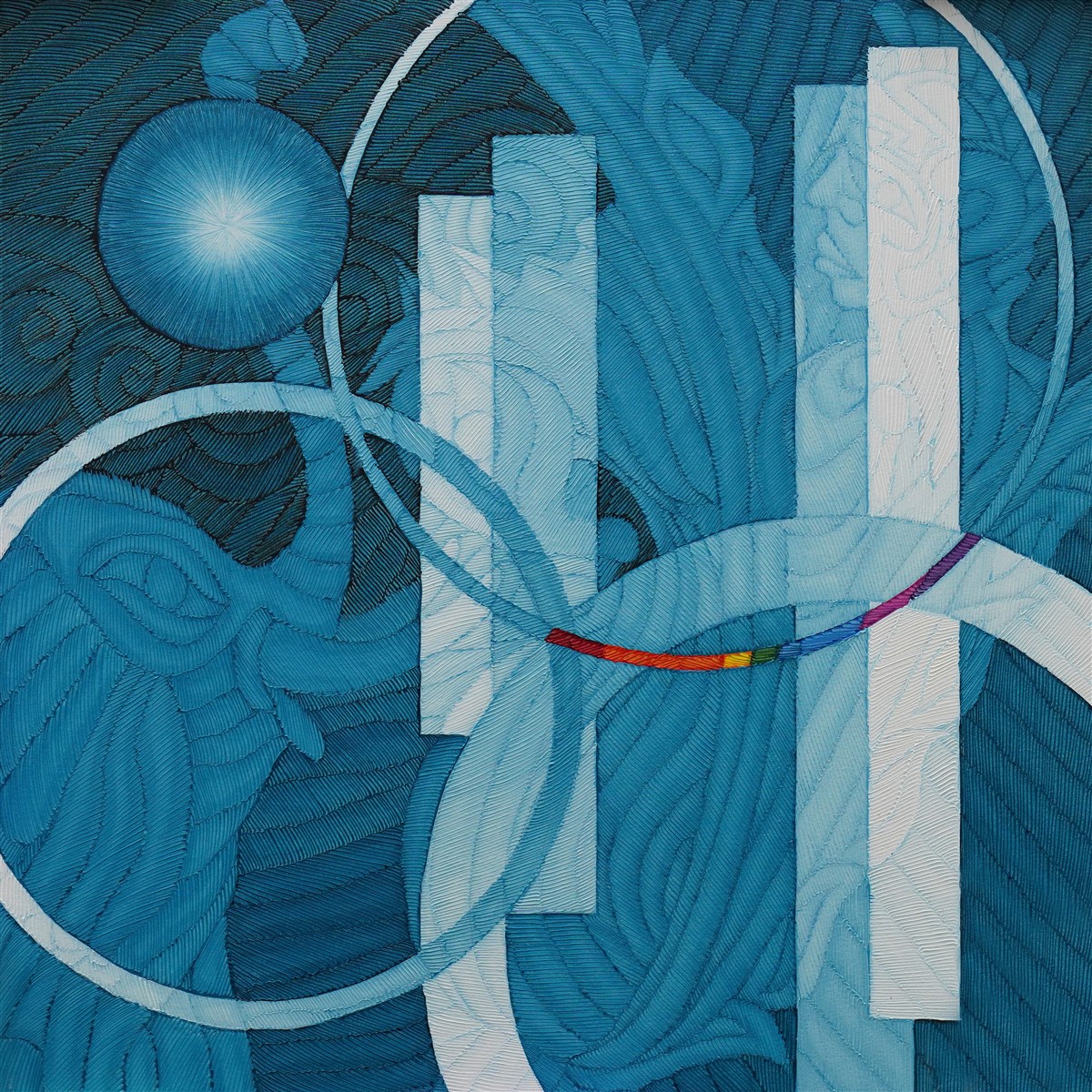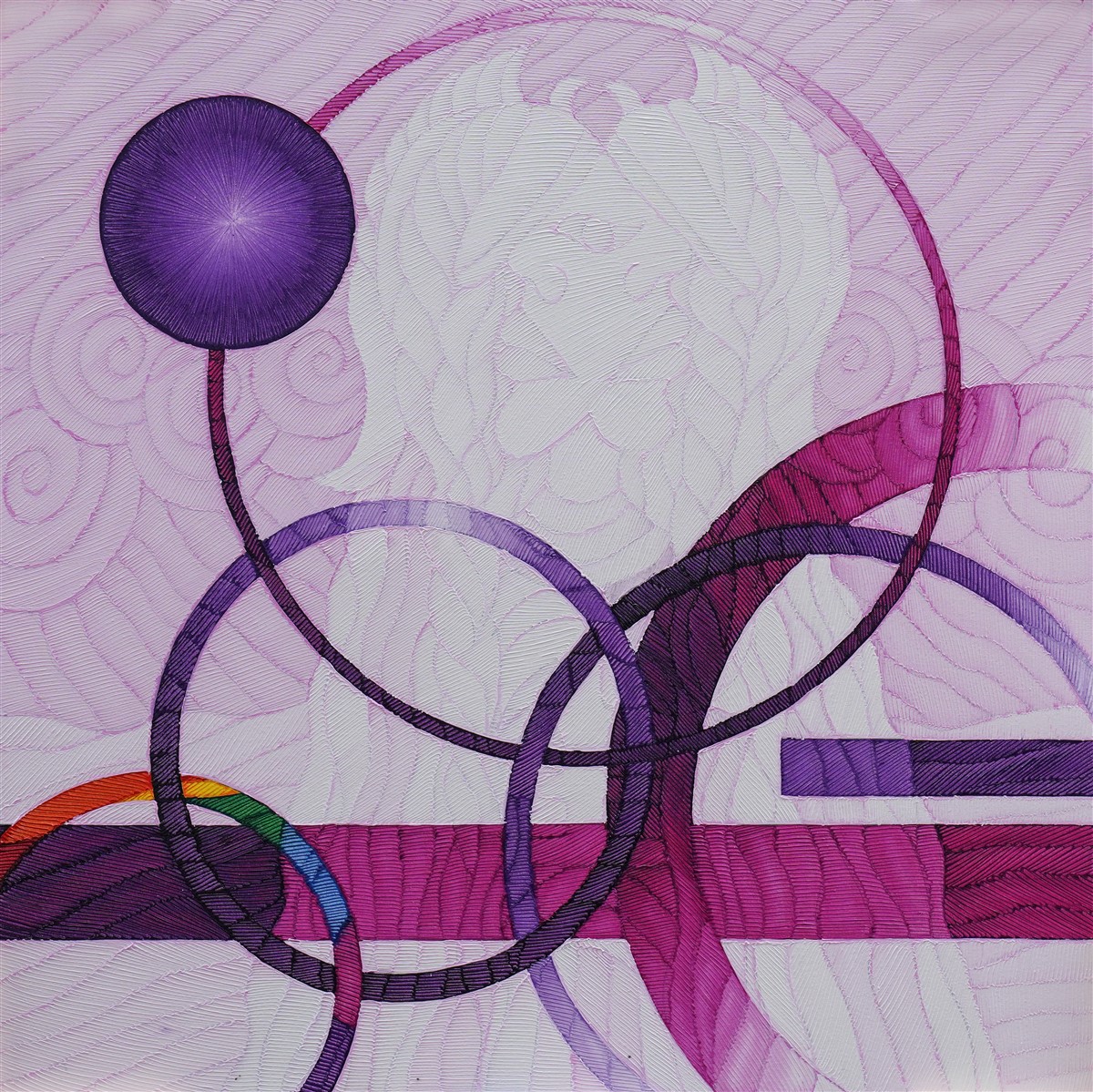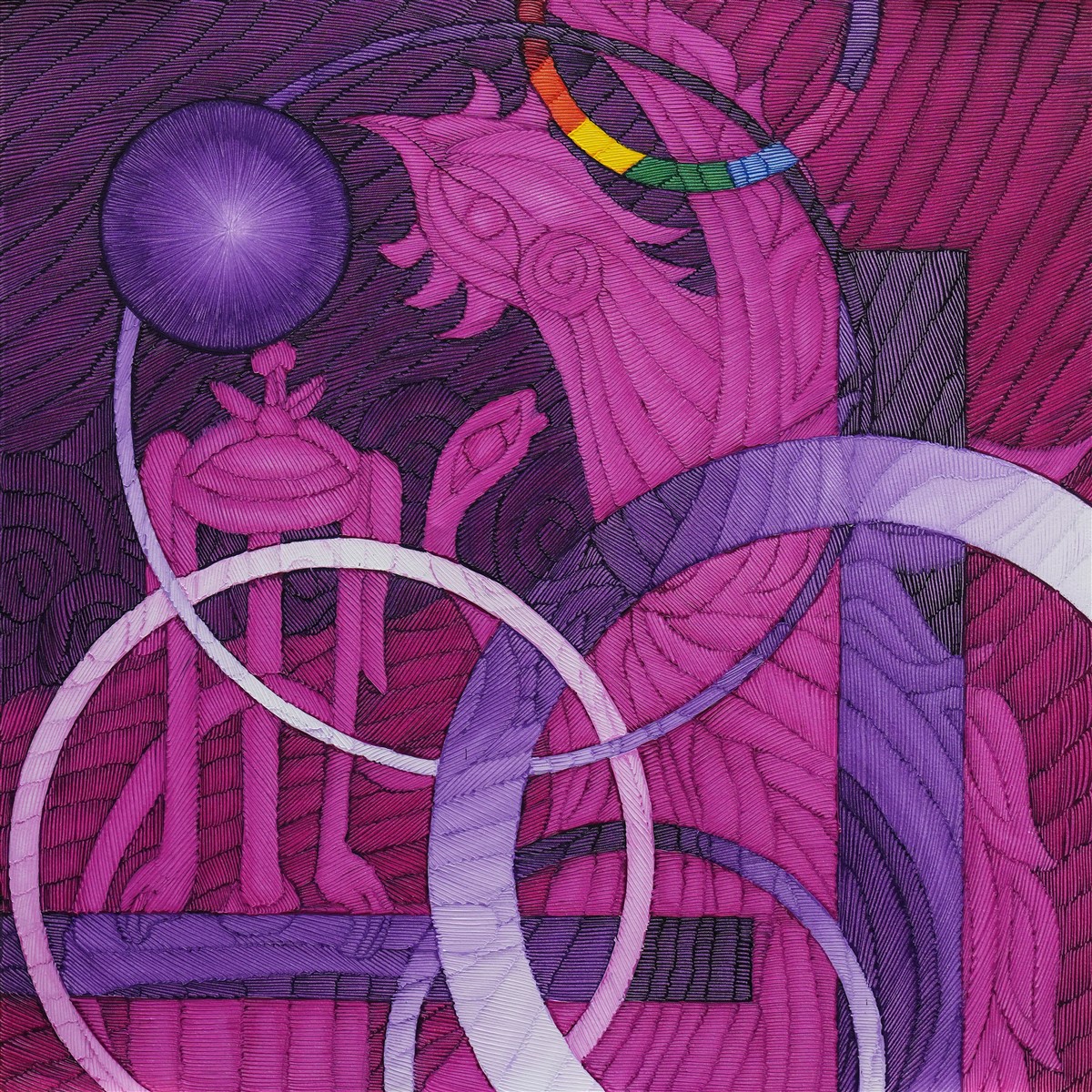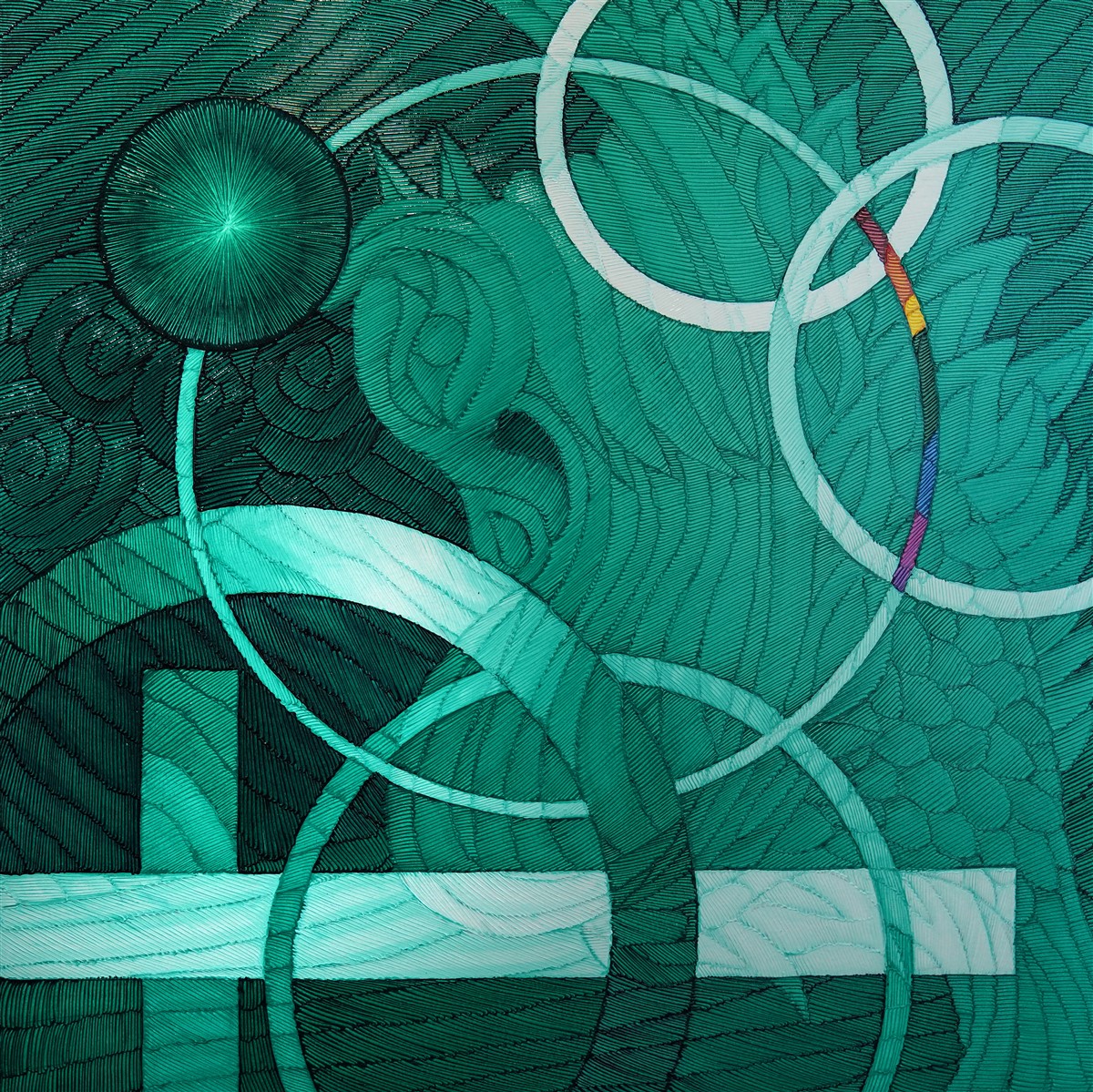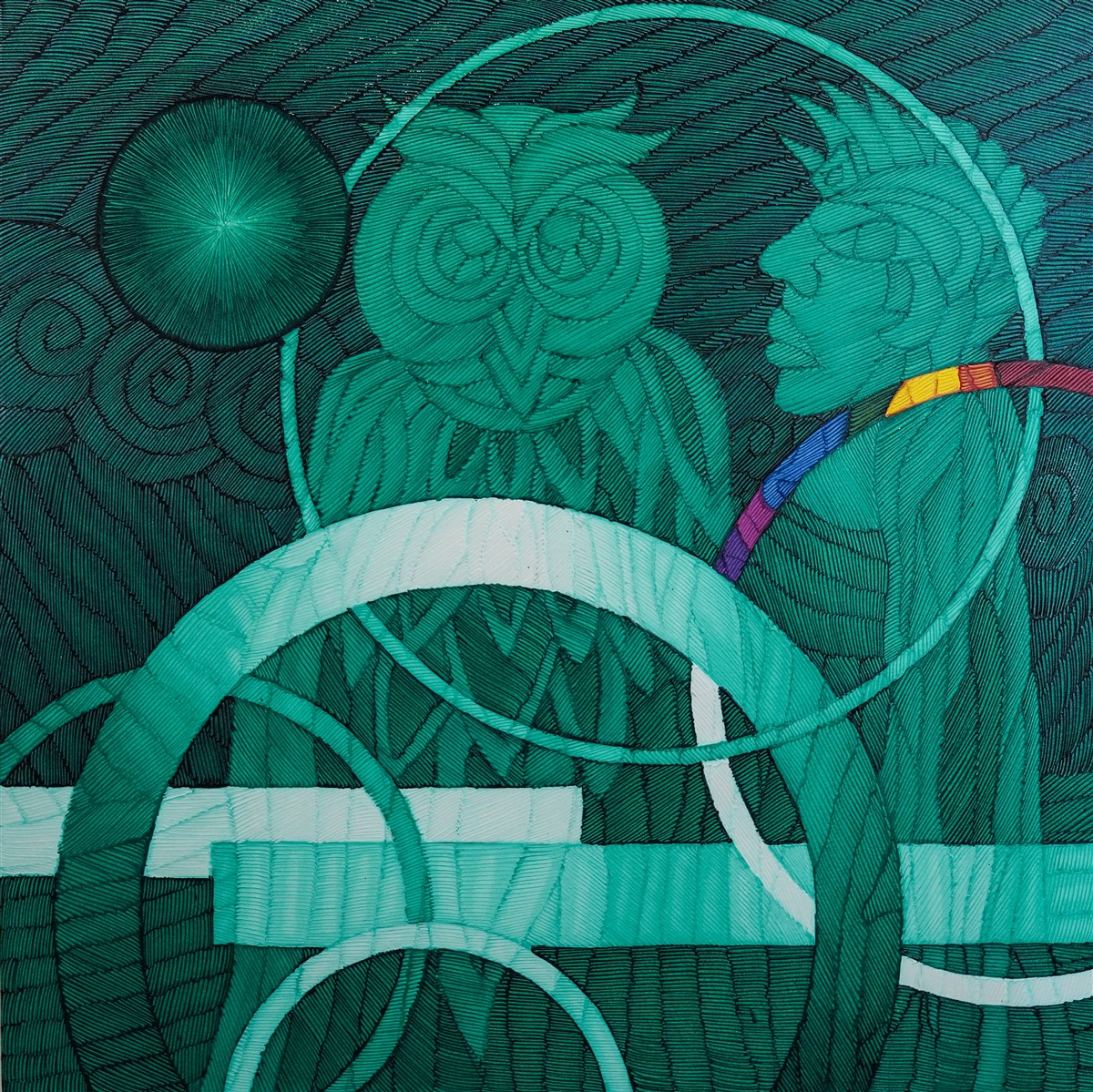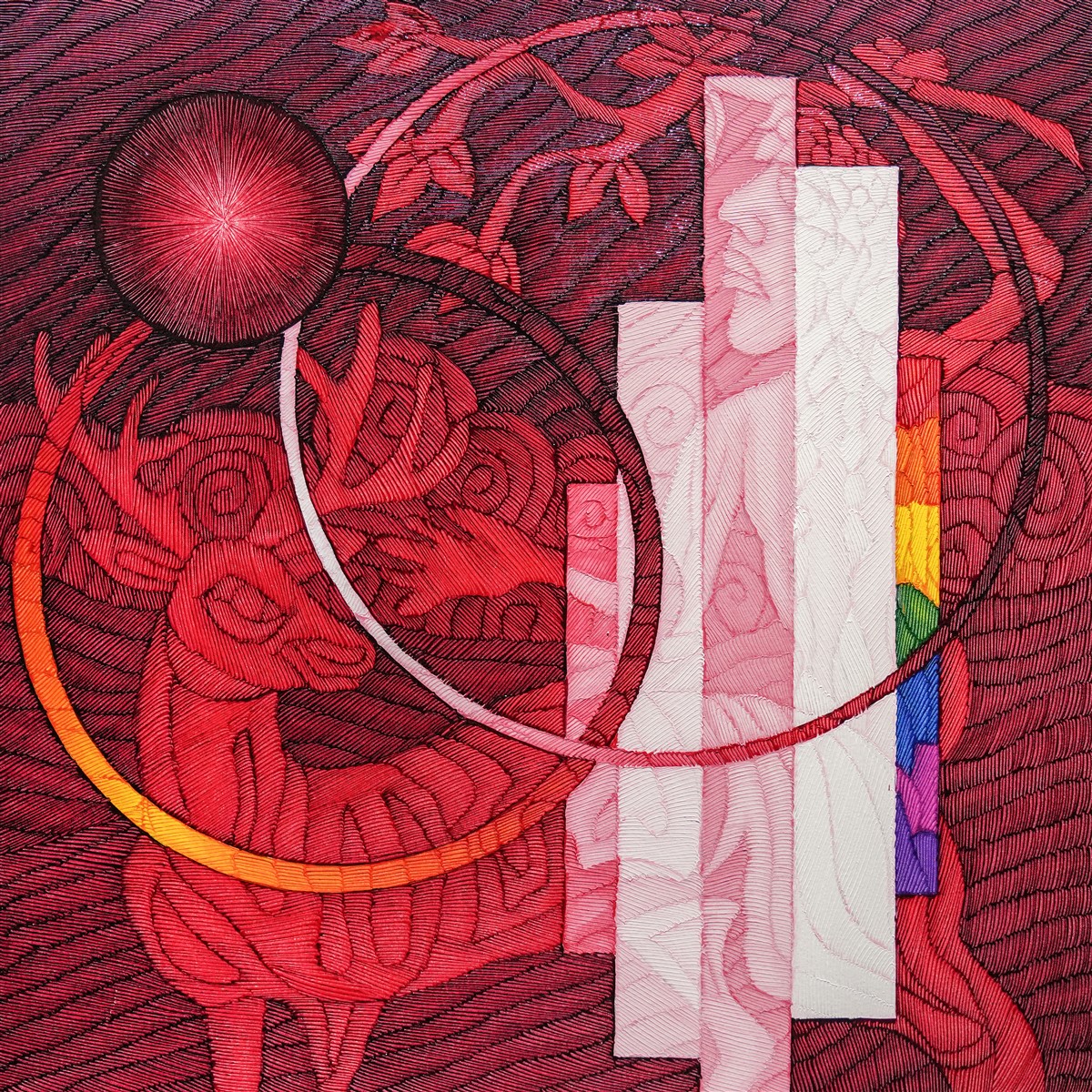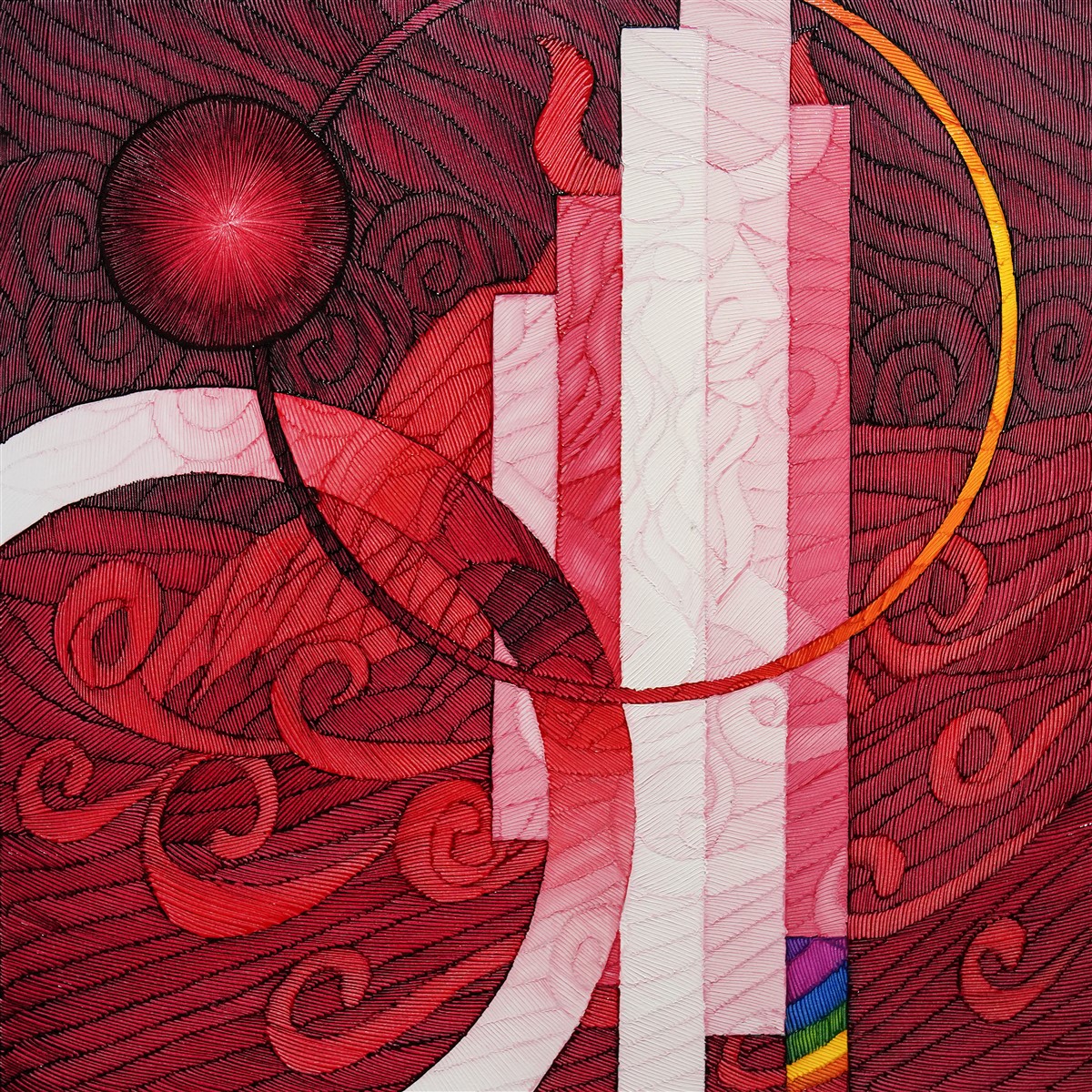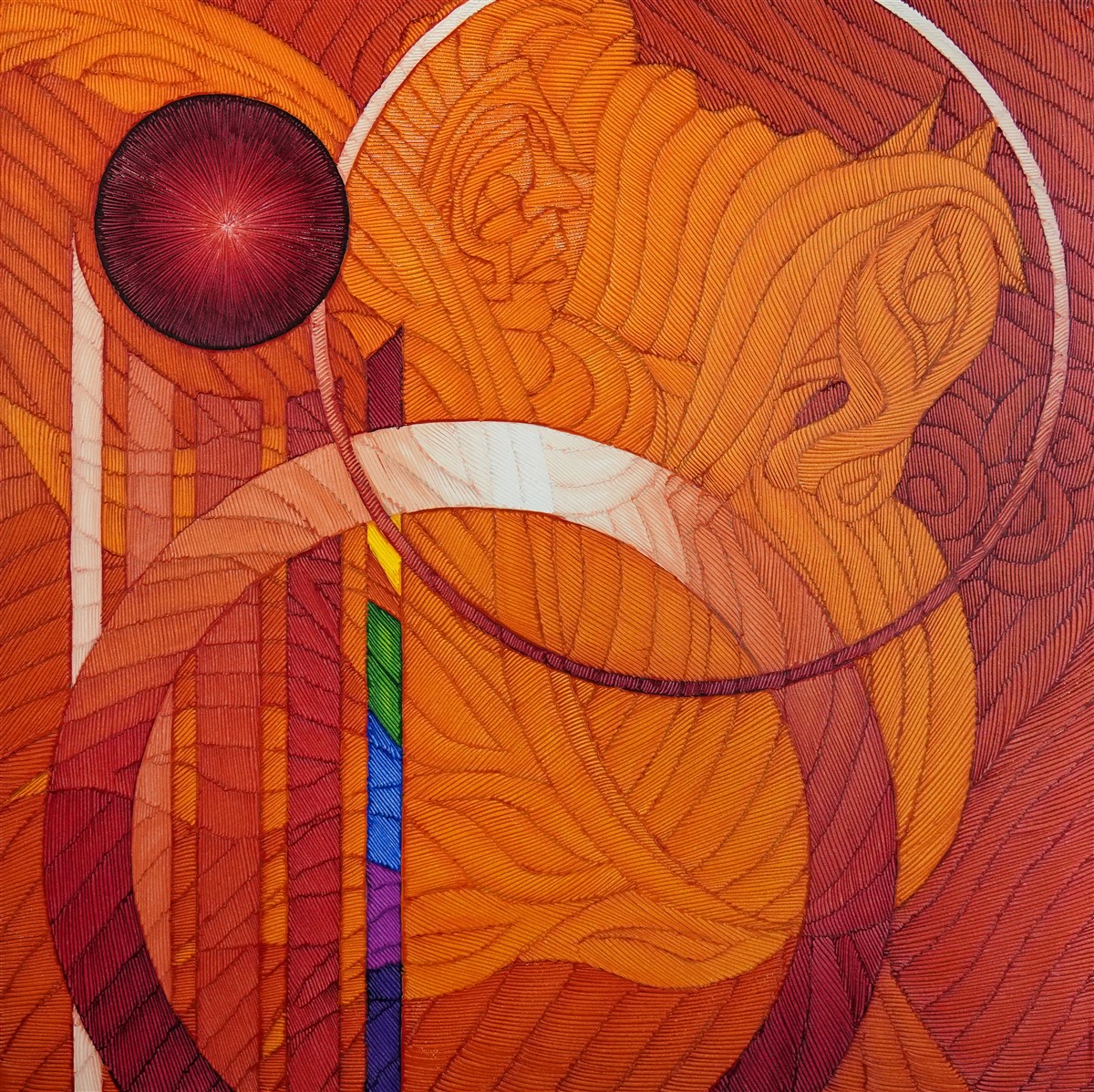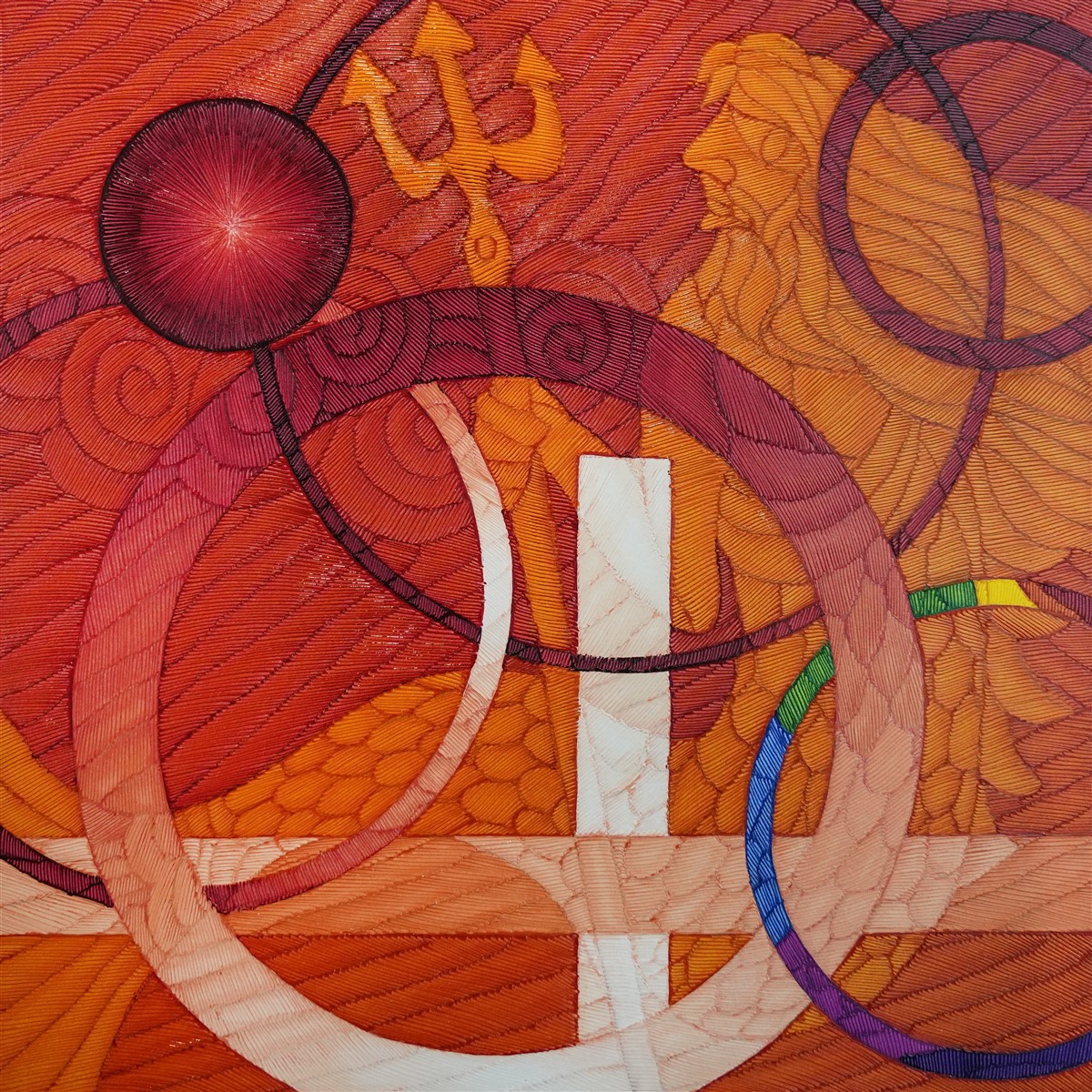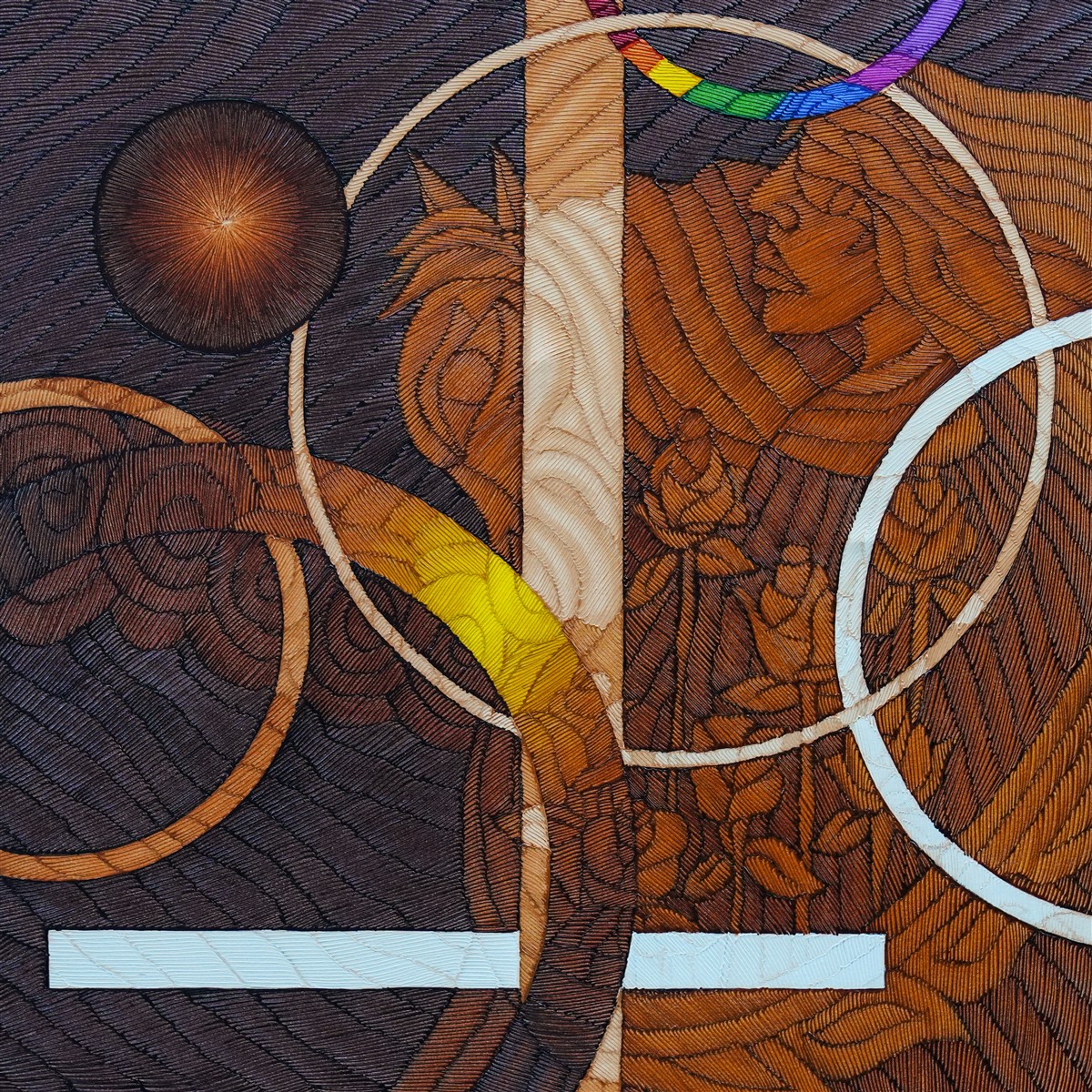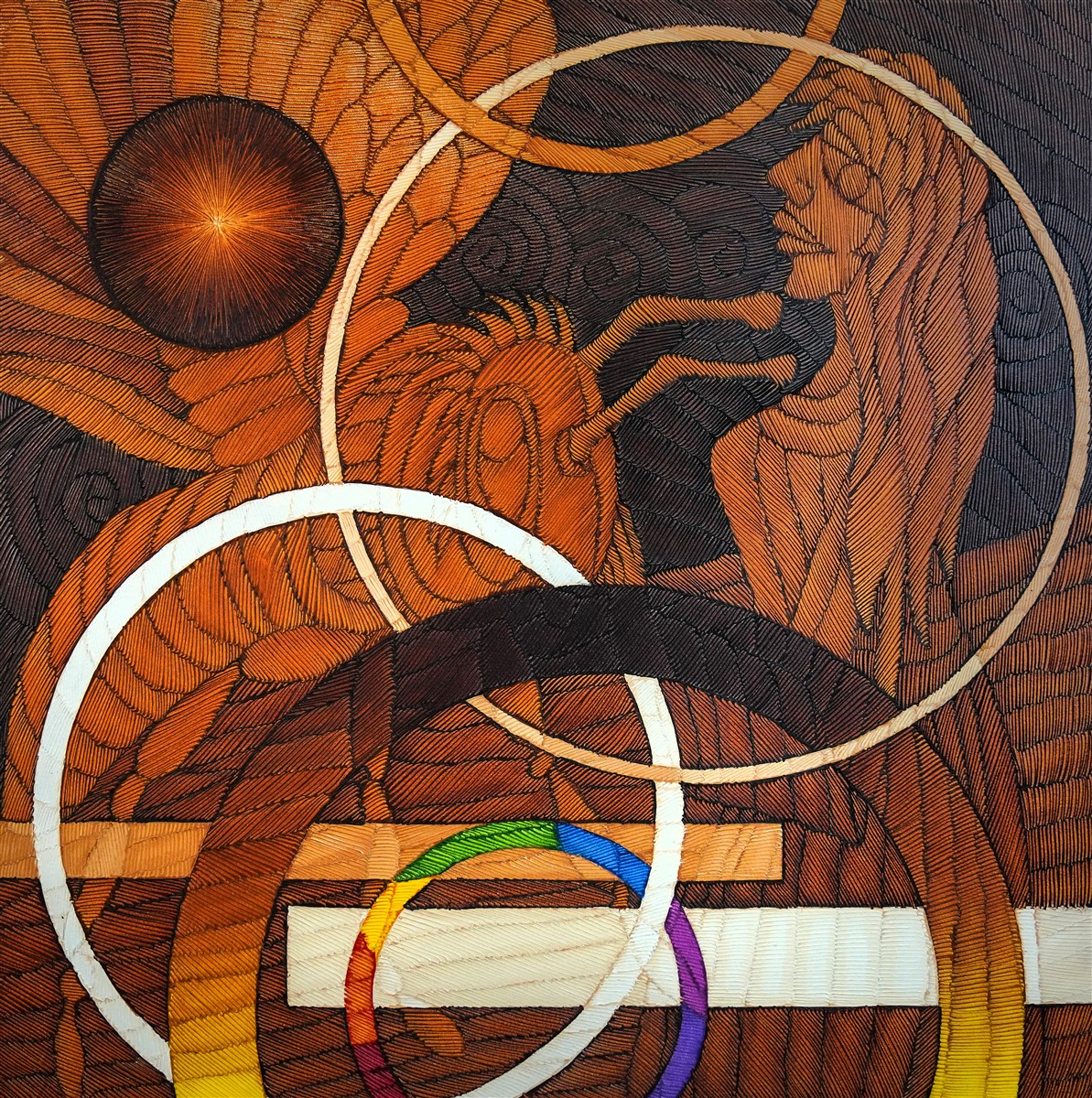17 January 2025 – 20 September 2025
The Lost Alphabet
Artİstanbul Feshane
Curated by Christoph Tannert
Sarcophaguses of Alphabet
2024
Installation
Angels of Alphabet
2024
Installation
Anatolia
2024
Installation
Göbeklitepe
2024
Mixed Media
470 x 490 x 640 cm
Era of Deluge
2024
Installation
432 x 1512 x 50 cm
Refugee Boat
2022
Installation
A Person Is Not A Bird That Flies Away
2021
Installation
430 x 860 x 20 cm (expanded 2024)
Never There
2017
Mixed Media
450 x 1200 x 150 cm (expanded 2023)
Seven Eyed Sun 1E – Corten
Sunstone Series
2023
Metal
270 x 173 x 164 cm
Ahmet Güneştekin’s solo exhibition, The Lost Alphabet by The Istanbul Metropolitan Municipality (IMM) weaves works across diverse mediums, focusing on affective associations of sculptural materials combined with objects in narrative constellations that bridge ancient mythologies with the changing environment of contemporary life. Curated by Christoph Tannert, with the contributions of IMM Culture, the show takes place in the city’s new cultural hub extensively restored by IMM Heritage, preserving the historic Feshane-i Amire.
The Lost Alphabet features sculptures, installations, videos, sound works, ceramics, and fabrics, blending macro and micro scales through meticulous material interventions, and it combines works of the artist’s sublime spheres, whose quest is as metaphysical as tangibly formal and spurs thoughts and forms through overlapping spaces and objects.
Given rise to fluid mythological worlds, the artist’s practice encompasses installations whose bodily presence transforms a visual perception – a face-to-face experience – into a fully haptic, subjective encounter; filmic and sound practices in which he develops micro-rhythmic structures that challenge the field of the historical narrative; dimensional works that expand his interpretations into meta-myths with multi-faceted figures seamlessly inhabiting canvas, textiles and ceramics; hybrid works mostly affected by migration objects, their volume in space, and the memories they evoke; and sculptures made of stone and metal fragments combined syncretically, coalescing the movement and immobility in a dialectical pairing of creation and destruction.
Arranging the visual, spatial, and material environment into a lexical space the audience can move through, The Lost Alphabet aims to open up a dialogue with materiality that evolves into a polyphonic conversation. The exhibition confronts the viewer with time-space pieces broken off from the whole and seeks answers: Why does an object become the subject of inquiry? Why do some objects return as the focus of research again and again? The artist always expands the field of painting by exploring everyday fragments and their emotions. These fragments are mostly inspired and shaped by mundane yet evocative objects, light and shadow, humans and objects cast on each other, their volume in space, memories and stories they trigger, imbued with an aesthetic inspired by ruins and present-tense relics. In the artist’s world, all the objects circularly emerge in ruins; shoes, signposts, suitcases, gas masks, scarves, fridges, bicycles and many non-human actors are the material remnants of the past.
Weaving truth and fiction through narrative methods intrinsic to myths, for Güneştekin, is a way of seeing. Mythology’s capacity to infiltrate and merge with everyday life, its mercurial nature, and its capacity to appear in unexpected forms appeal to him. Falls like a shadow on his practice, the cycle of making and unmaking, weaving and unravelling inherent in myths. He focuses on narrative strands that can be formed, reconstructed and remade – whether in fabric or paint, bronze or stone formations. In the exhibition, the artist combines dimensional works with bronze configurations, studying the ancient coins of Anatolia from the last three thousand years in the section Witnesses Through Thousands of Years, co-curated by Hasan Mert Kaya, and raises issues about how fiction relates to truth. Through associations in his constellations, he constantly deconstructs different dimensions of mythology to reveal the multi-layered aspect of everyday life and the multiple truths to which it gives birth.
The realm of language is the artist’s sphere of practice in the works as a tribute to the banned fictional, imaginary universes and thoughts, extinct languages due to human intervention, and vulnerable and endangered languages. He superimposes graphemes (letters) onto phonemes (sounds) in the works with the letterforms. Relying on the notion that language is a complex living system, he investigates the complex issue of alphabet politics — the attempts by nations, cultures, and ideologies to ascribe a specific set of letters to a given language. The artist suggests that the alphabets are not just forms of language, they encompass cultures and voices they blossomed from.
The artist’s explorations of the stone blossom into a series of works, which incorporate sound, images, and objects in a fusion that reflects different facets of the materials specific to the sculptural space of the exhibition. From his sculptures with stone formations, some with fossilised structures, to his installations with objects, his site-specific works create a dialogue with a particular setting. They are interwoven in a way that intensifies viewers’ perceptions. The meaning can only be ascertained as the viewer moves through space, that is, through the space of each sculpture and the space of the installation as a whole. No matter which path is chosen, the viewer is always within the continuum of the sculptural field. The arrangement of the works in the galleries generates passages of space that are distinctly different—narrow and wide, compressed and elongated, modest and towering—and always unanticipated. The viewers are encouraged to explore the work from various perspectives.
The artist takes an unconventional approach to the material and creates gravitational contrasts in his sculptural compositions through the fusion of metal and stone. The sculptures featuring marble stone formations enclosed within intertwining circular metal carcasses with differing sizes and layouts and carved through labyrinthine pathways showcase the artist’s scale change and connect the installation space to Feshane’s industrial history.
The Lost Alphabet manifests the artist’s sensibilities about lost alphabets, coalescing with the treatment of stone and metal formations and offering a shift in perspective. Güneştekin looks at stones as a structural material and sees an image of a more sustainable future. He then connects ancient times and worlds through community and conversation to encourage people to pause and think about stones in new ways.
Introduced to the Istanbul art scene as a cultural project in collaboration with the DG Art Project under the artistic direction of Angelo Bucarelli and Paola Marino, and sponsored by Yıldız Holding, The Lost Alphabet is one of Güneştekin’s large-scale exhibitions addressing the questions that stir the contemporary art world.


